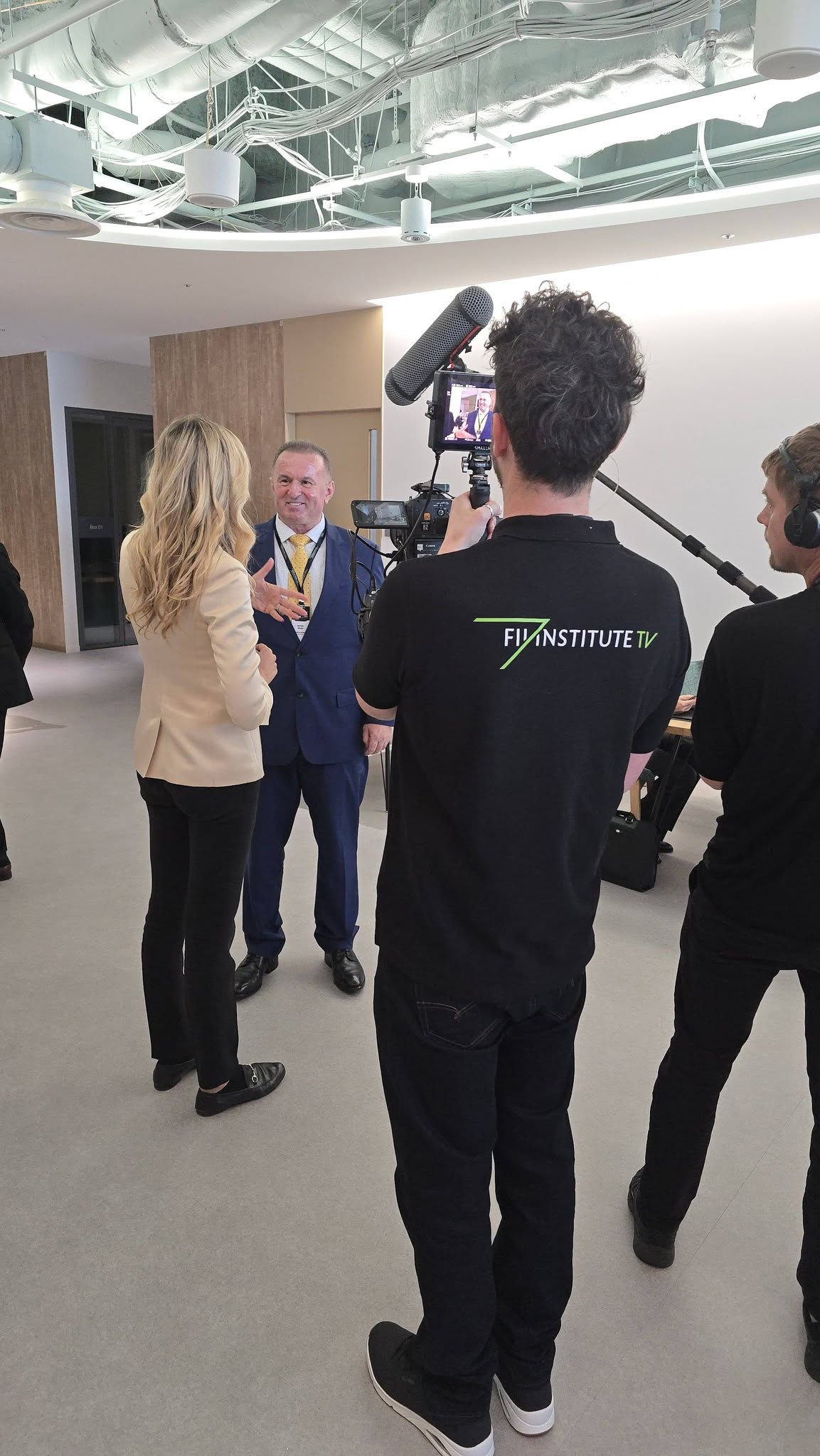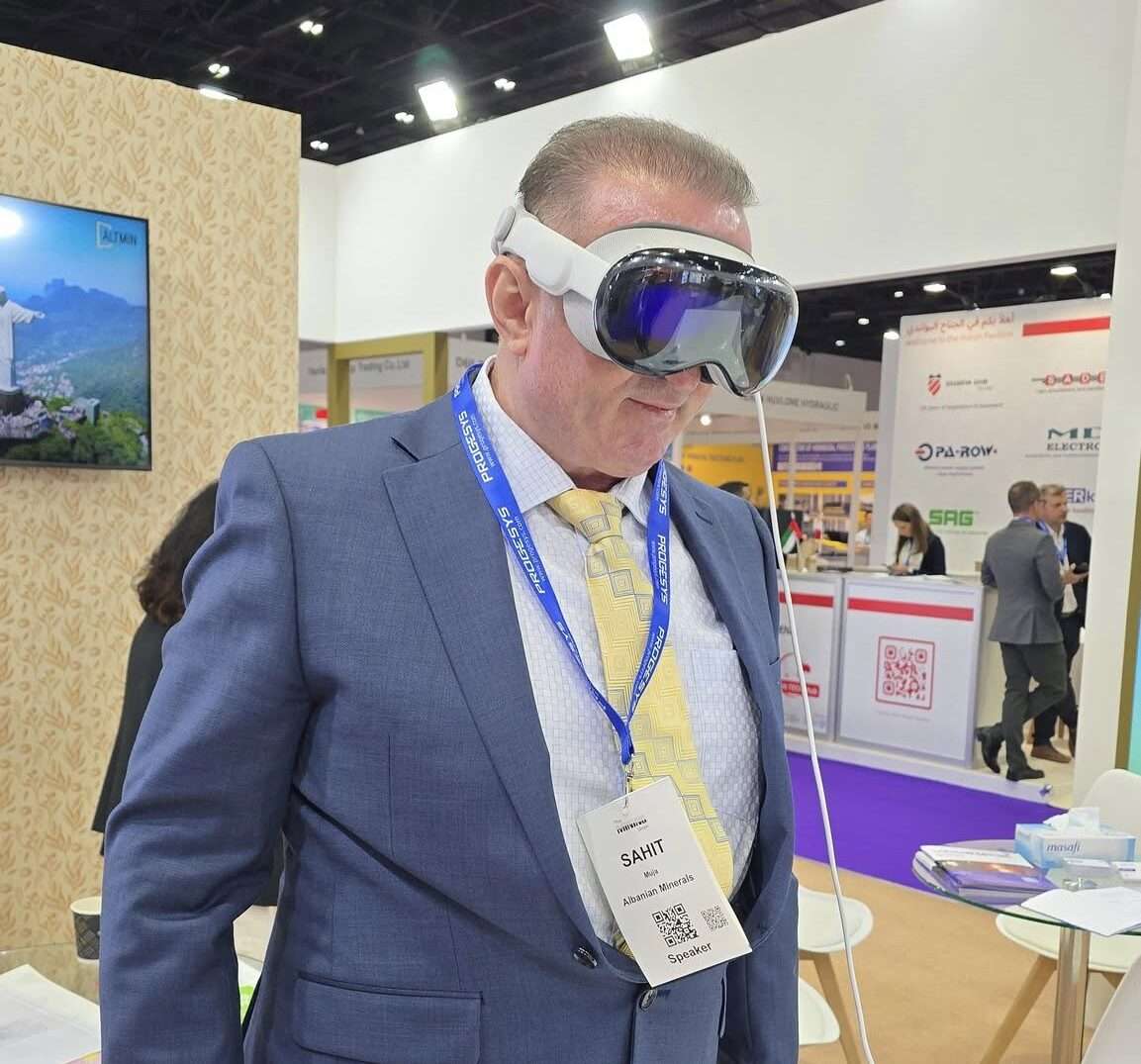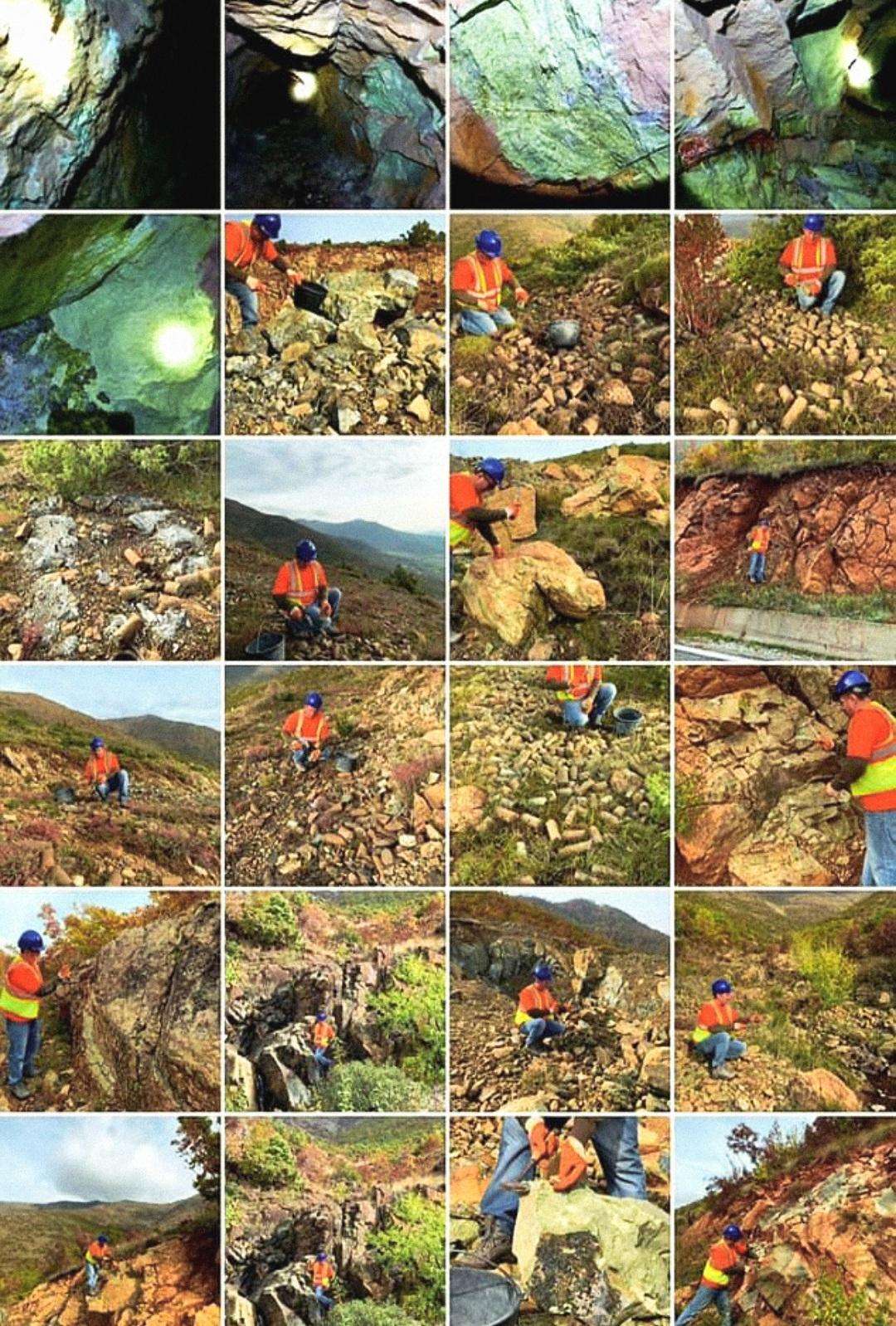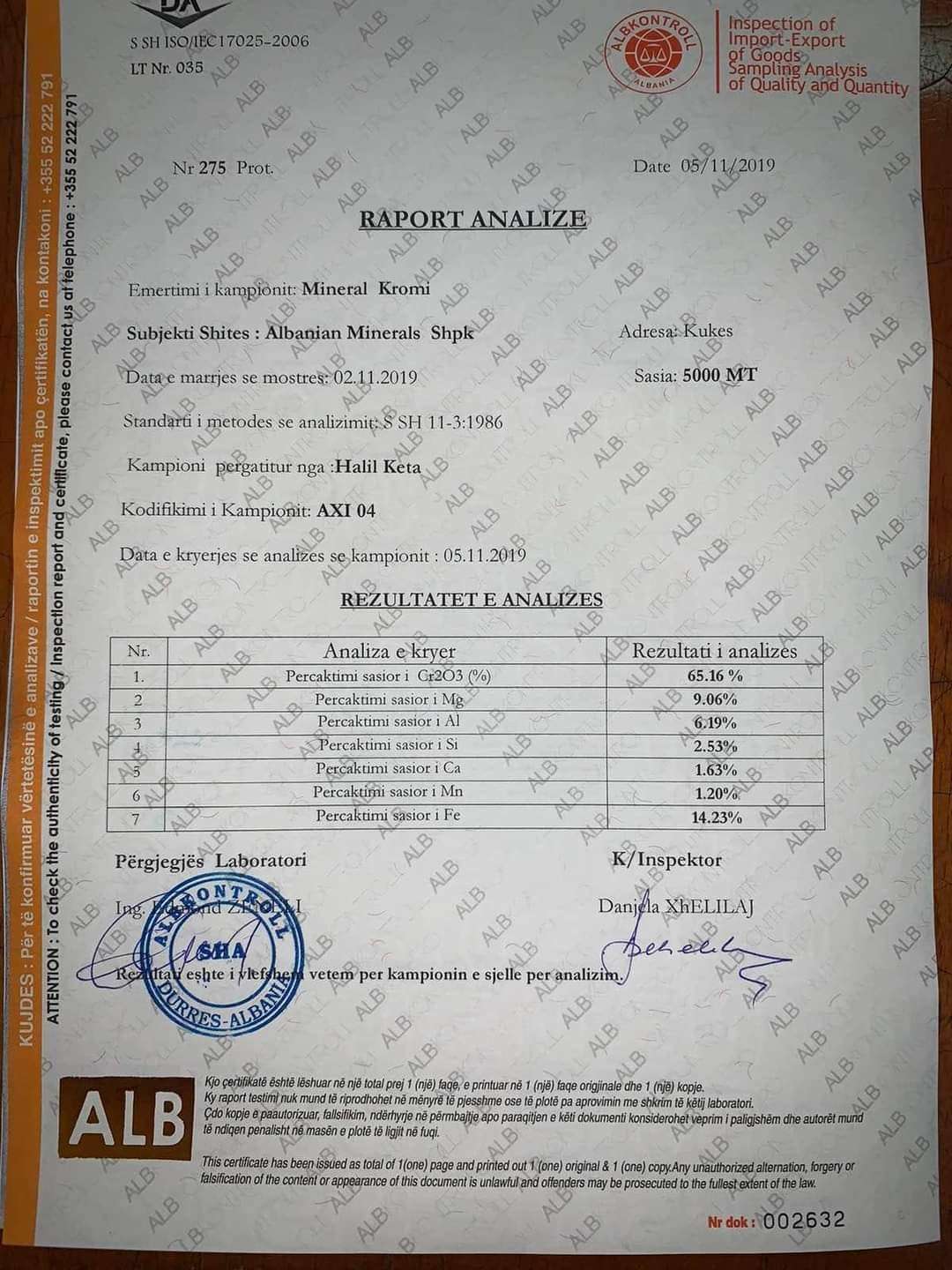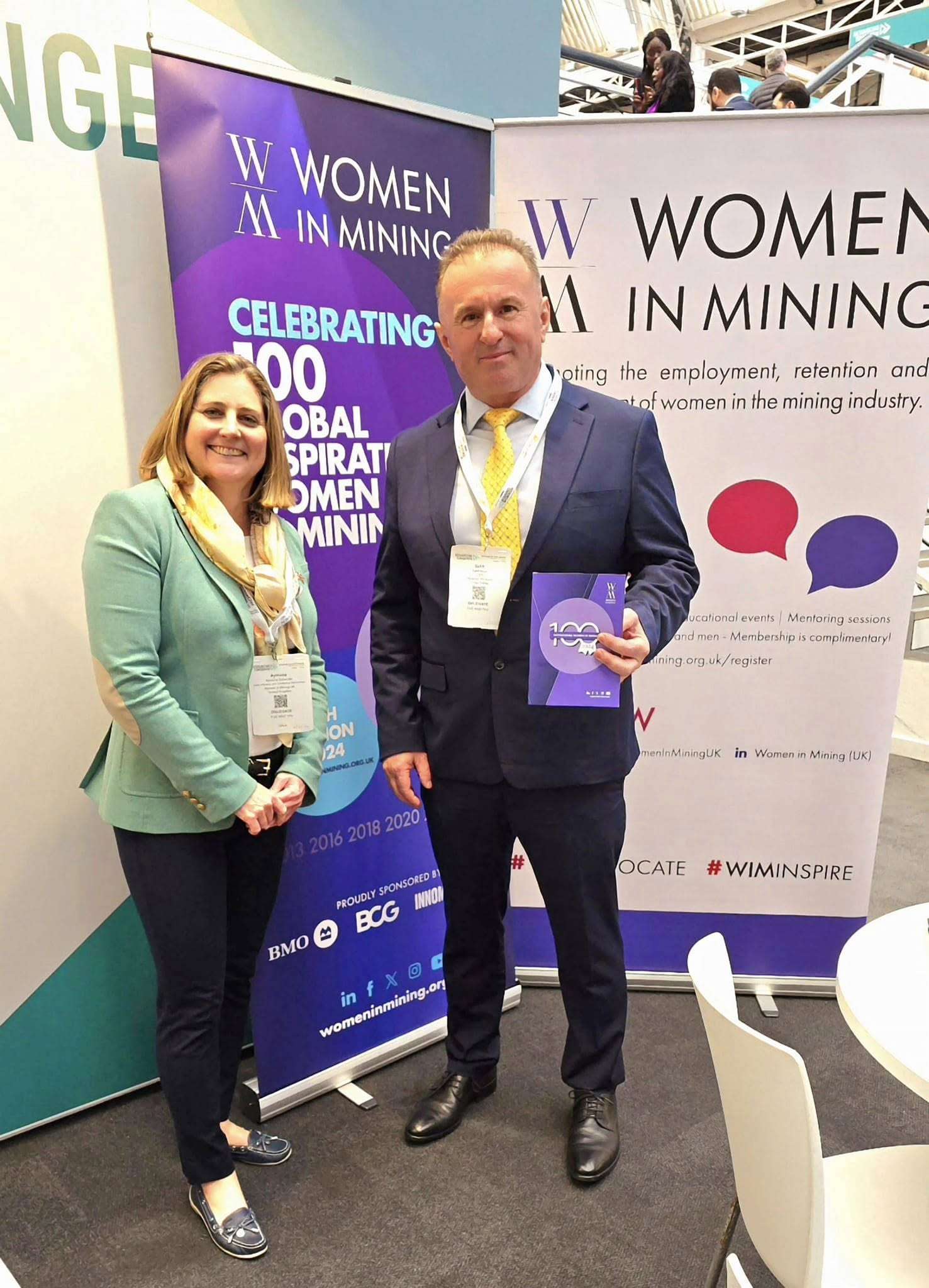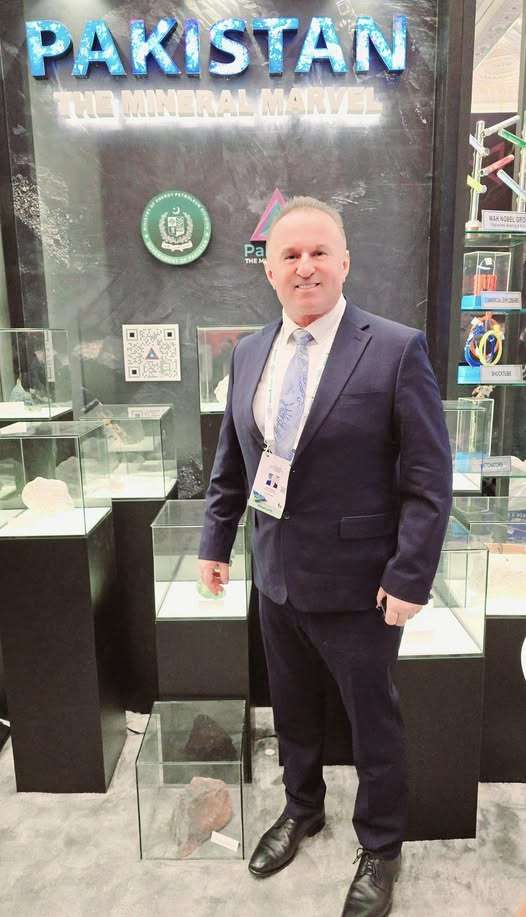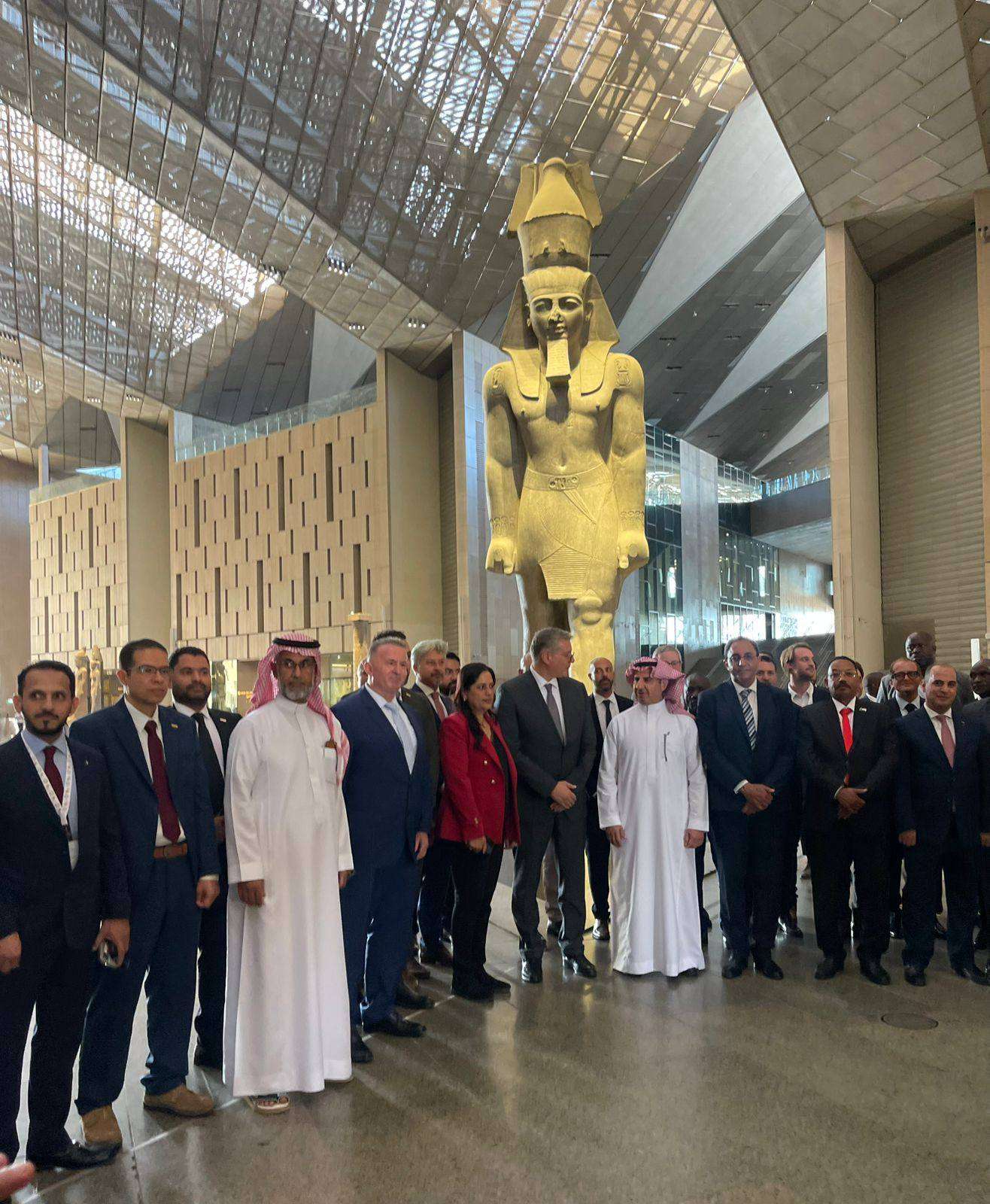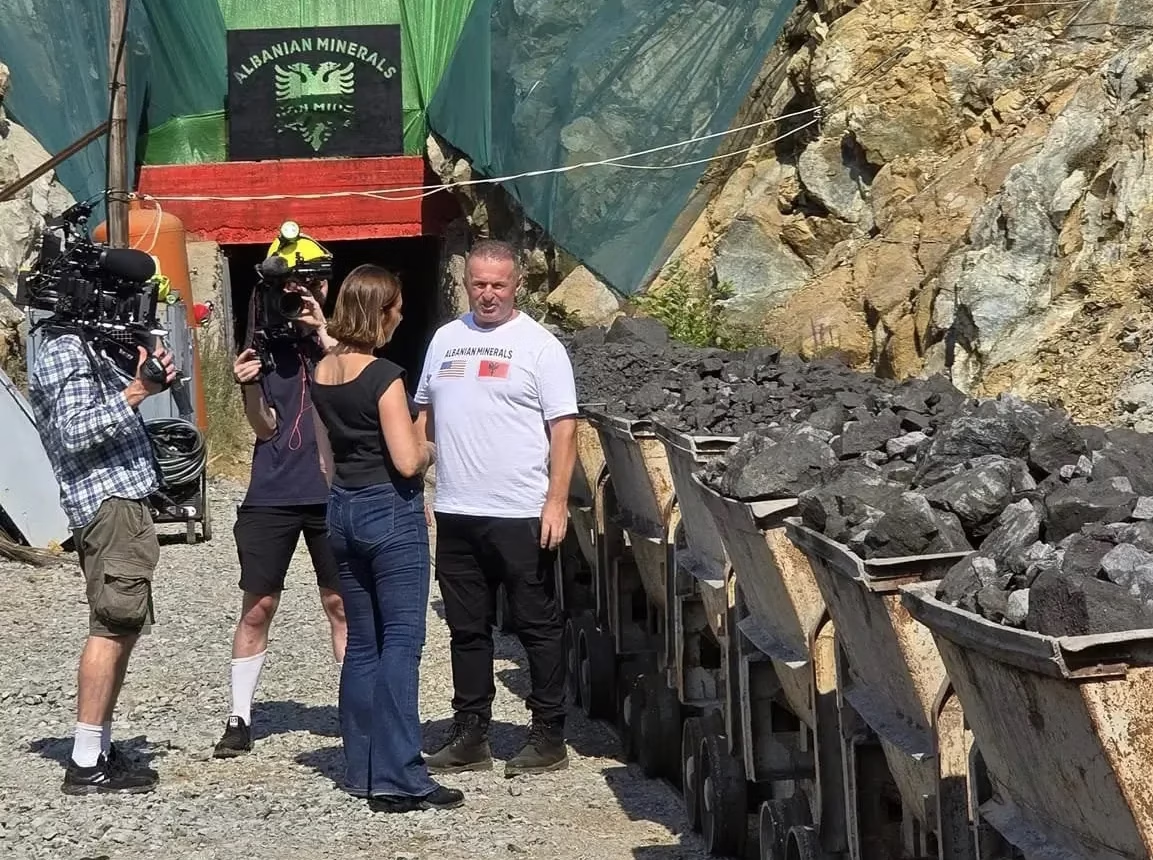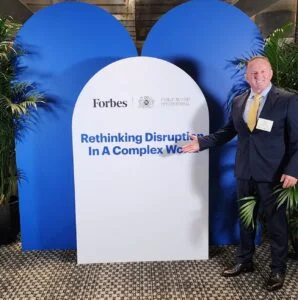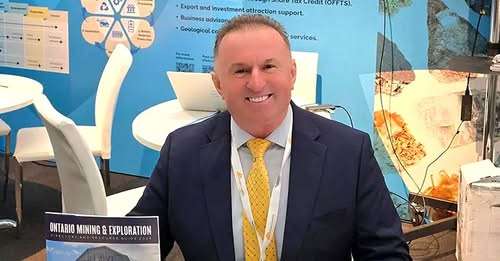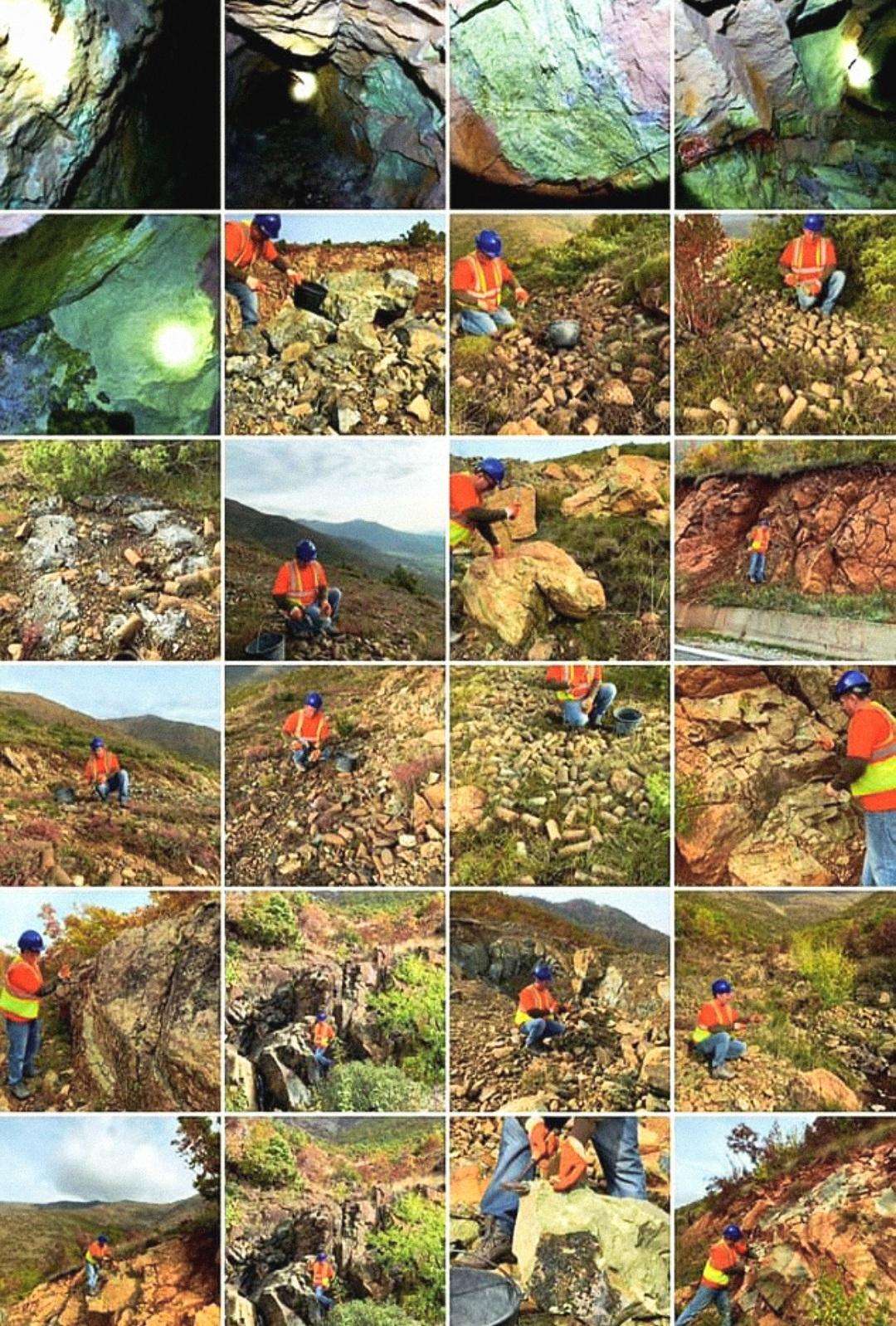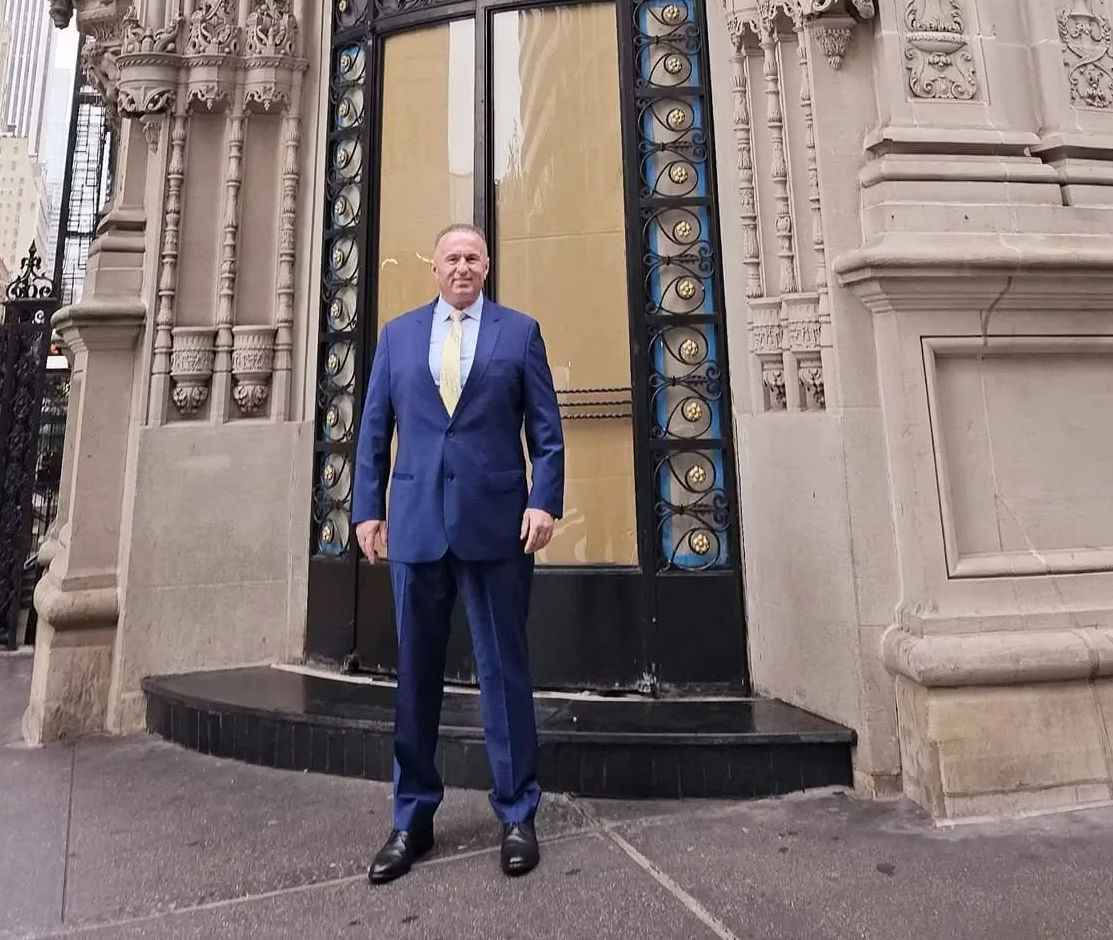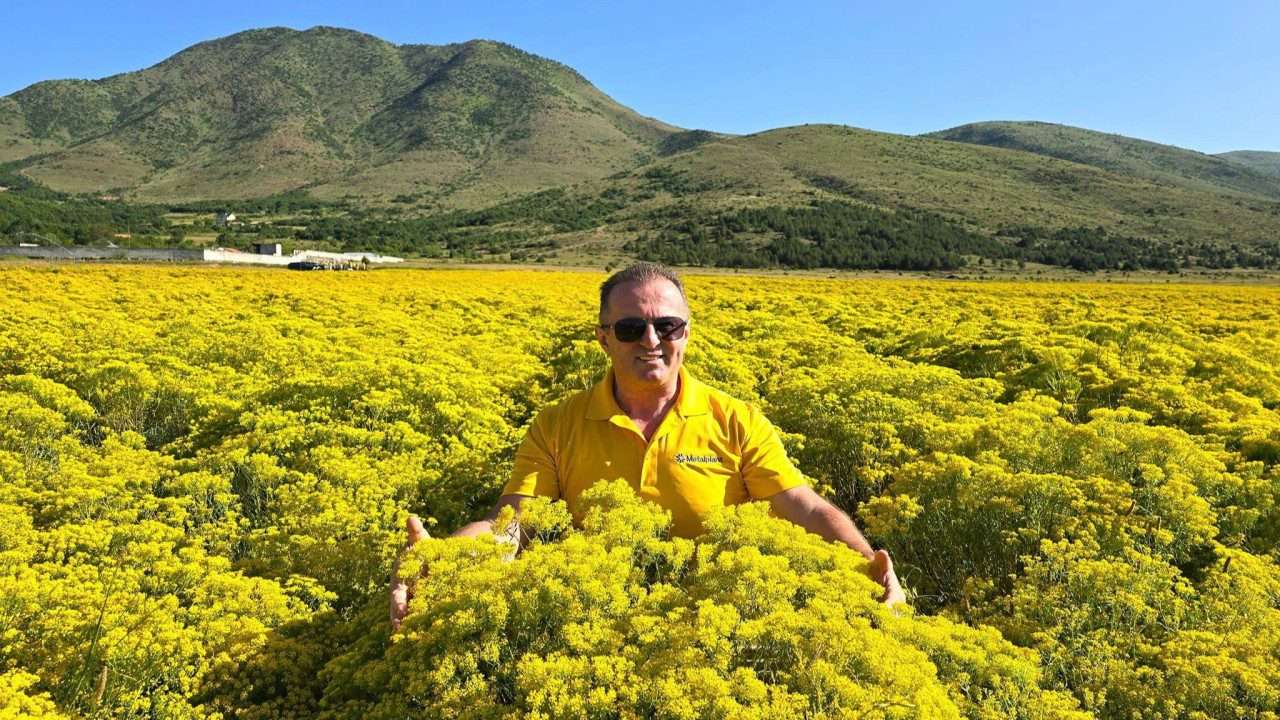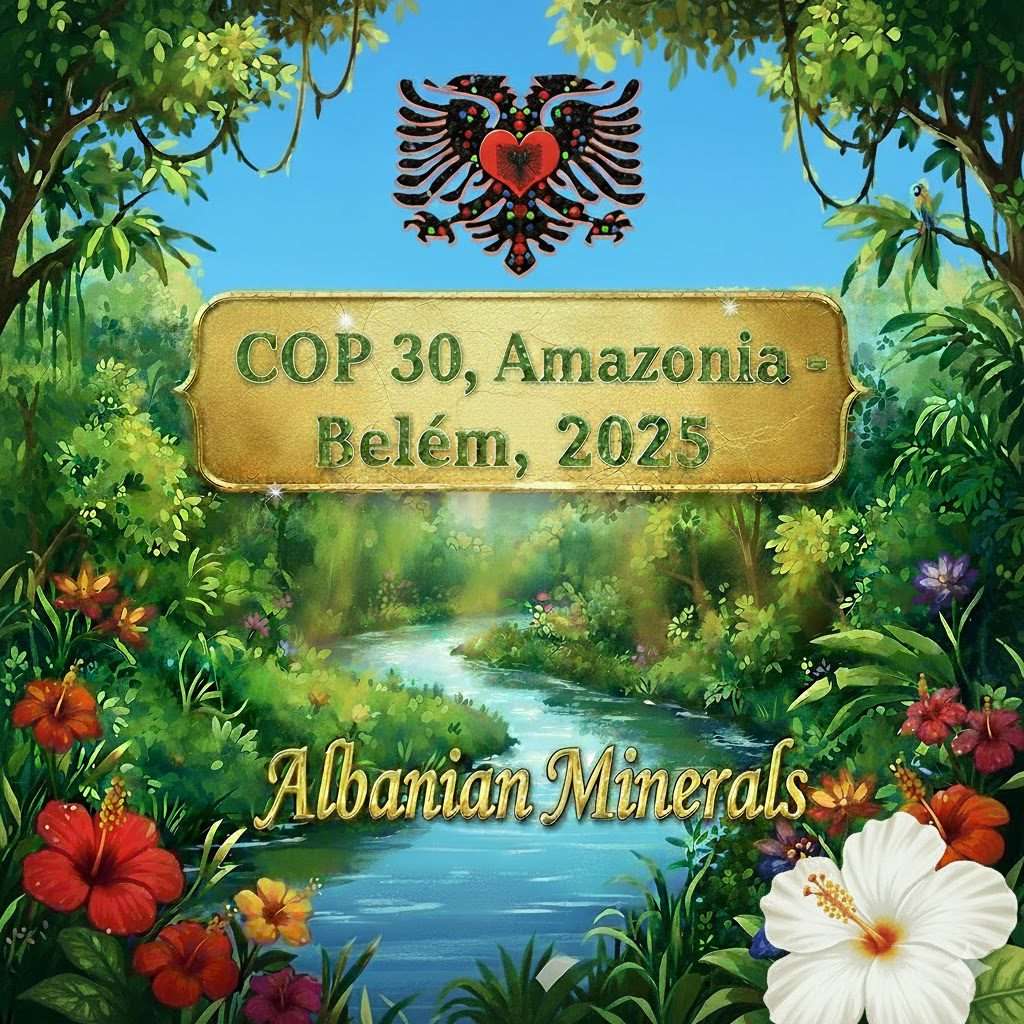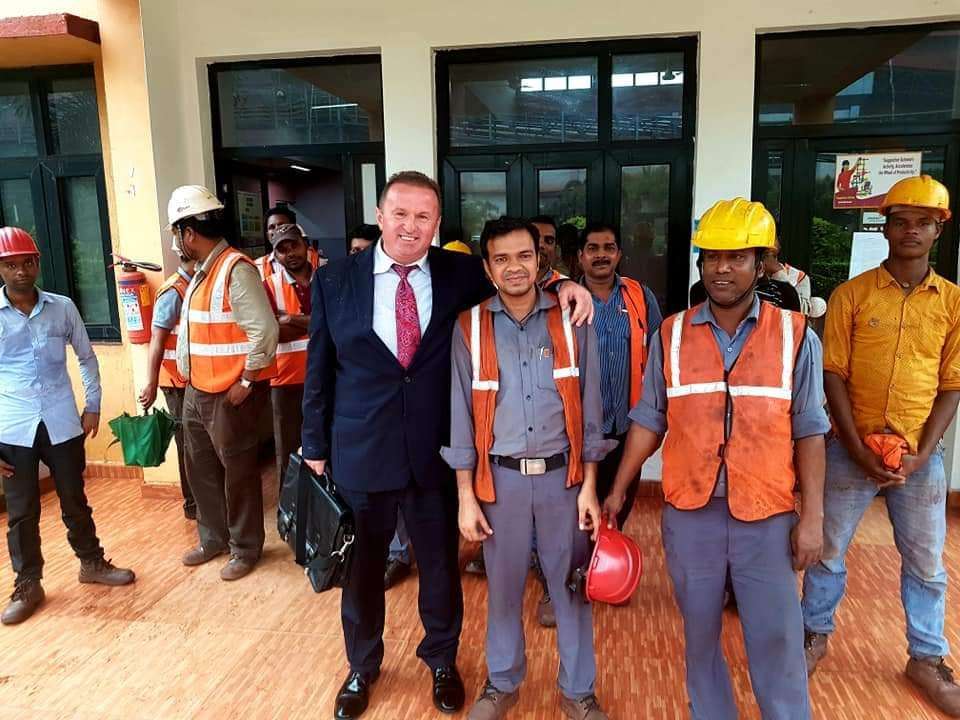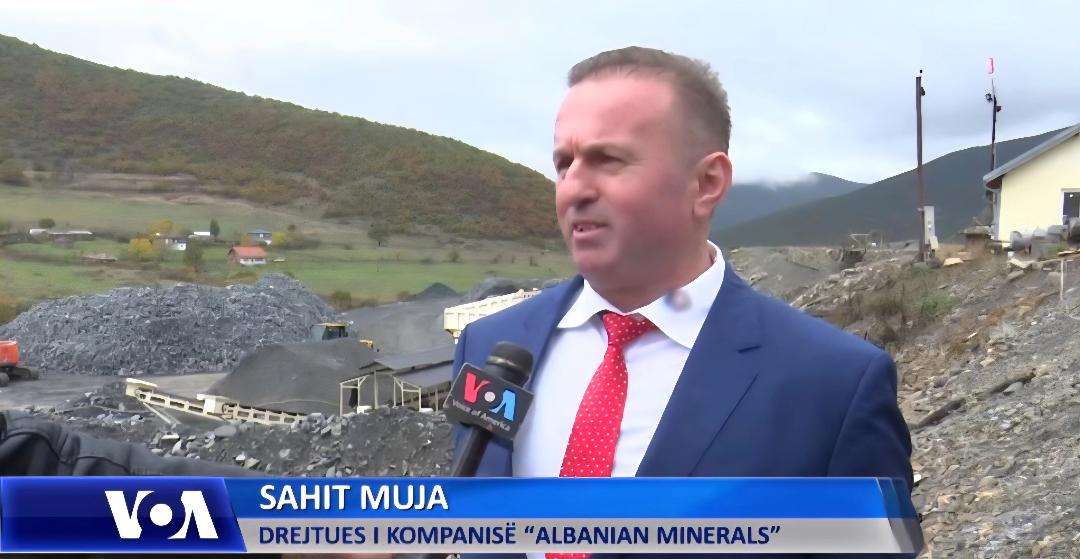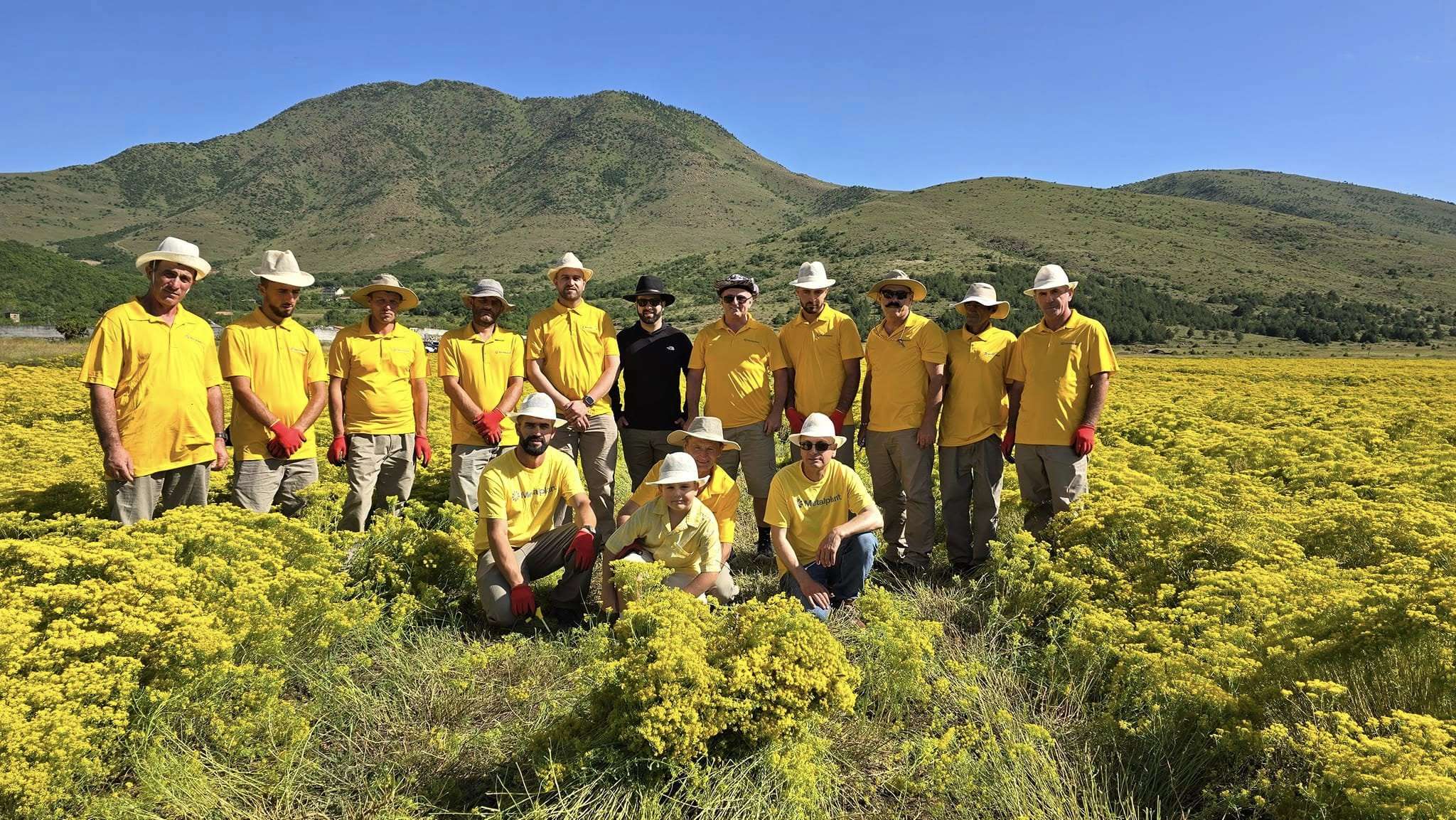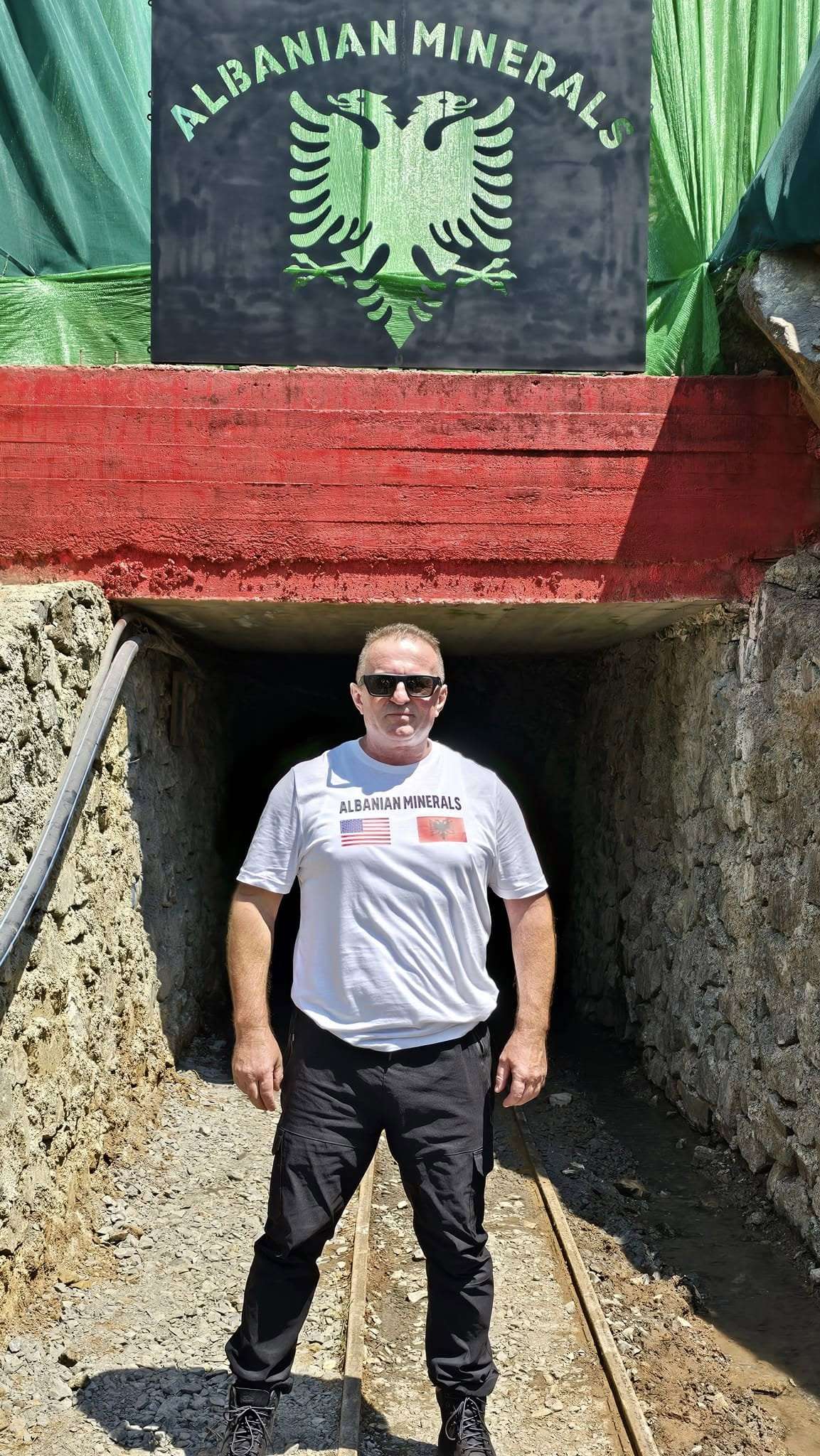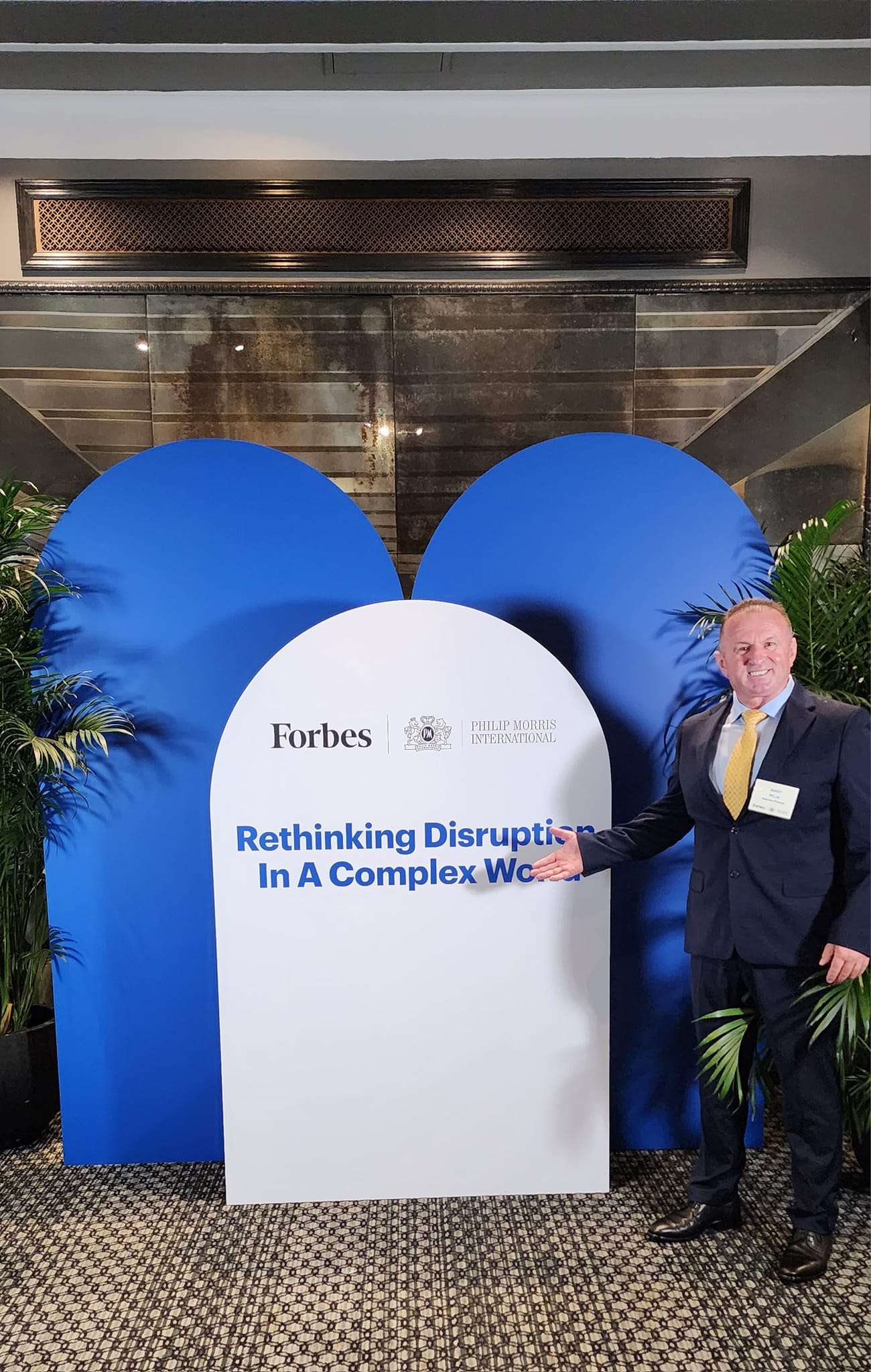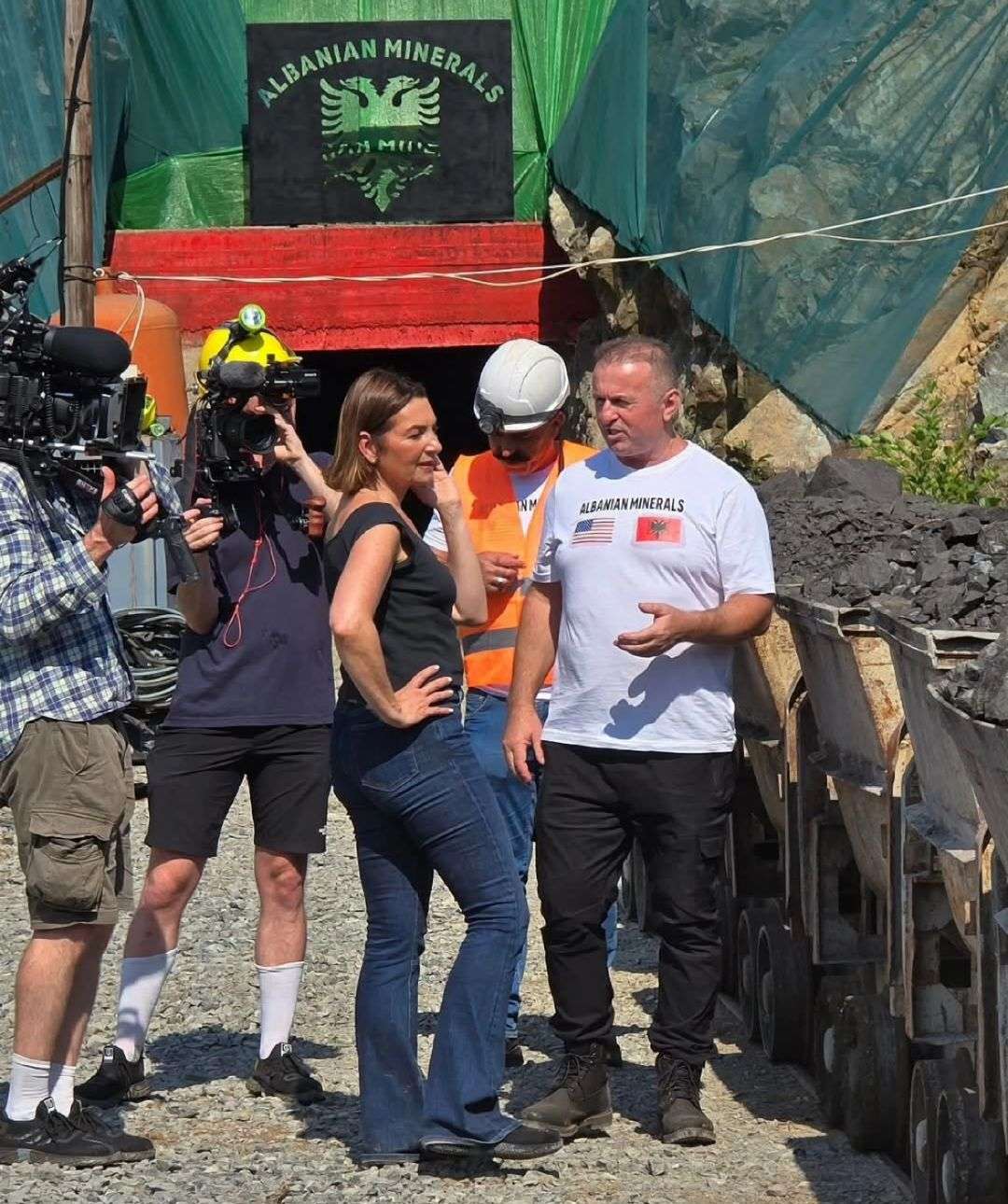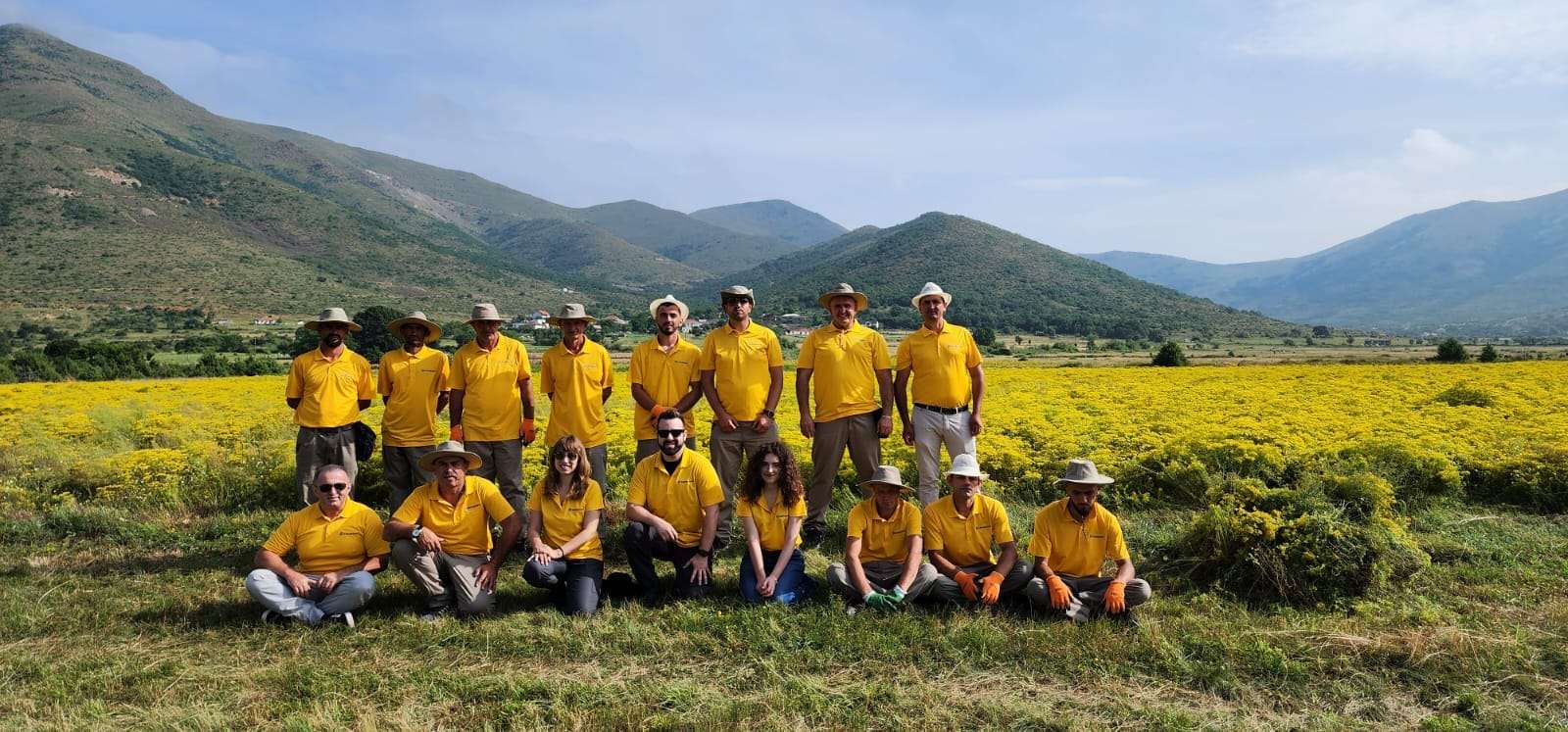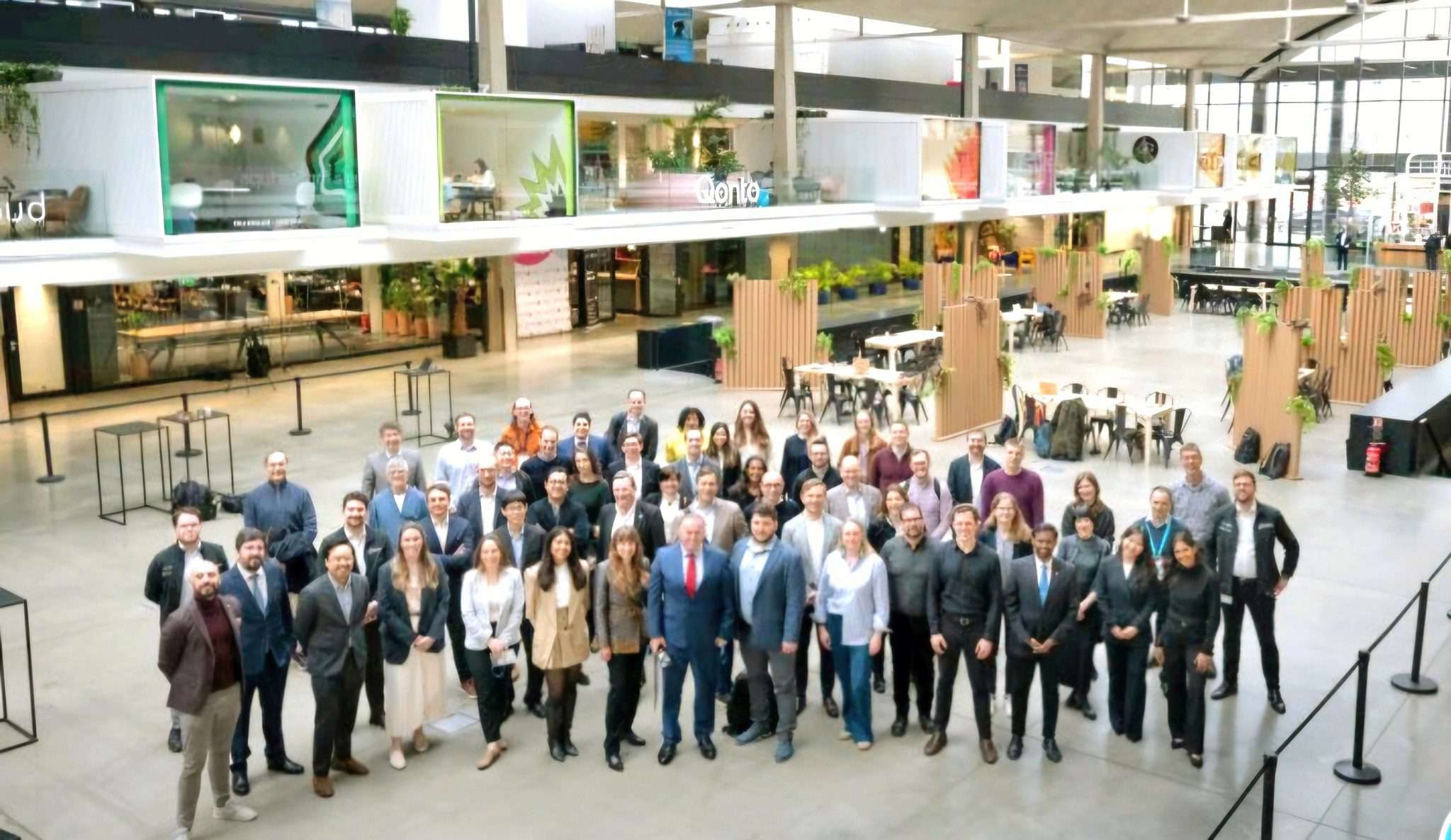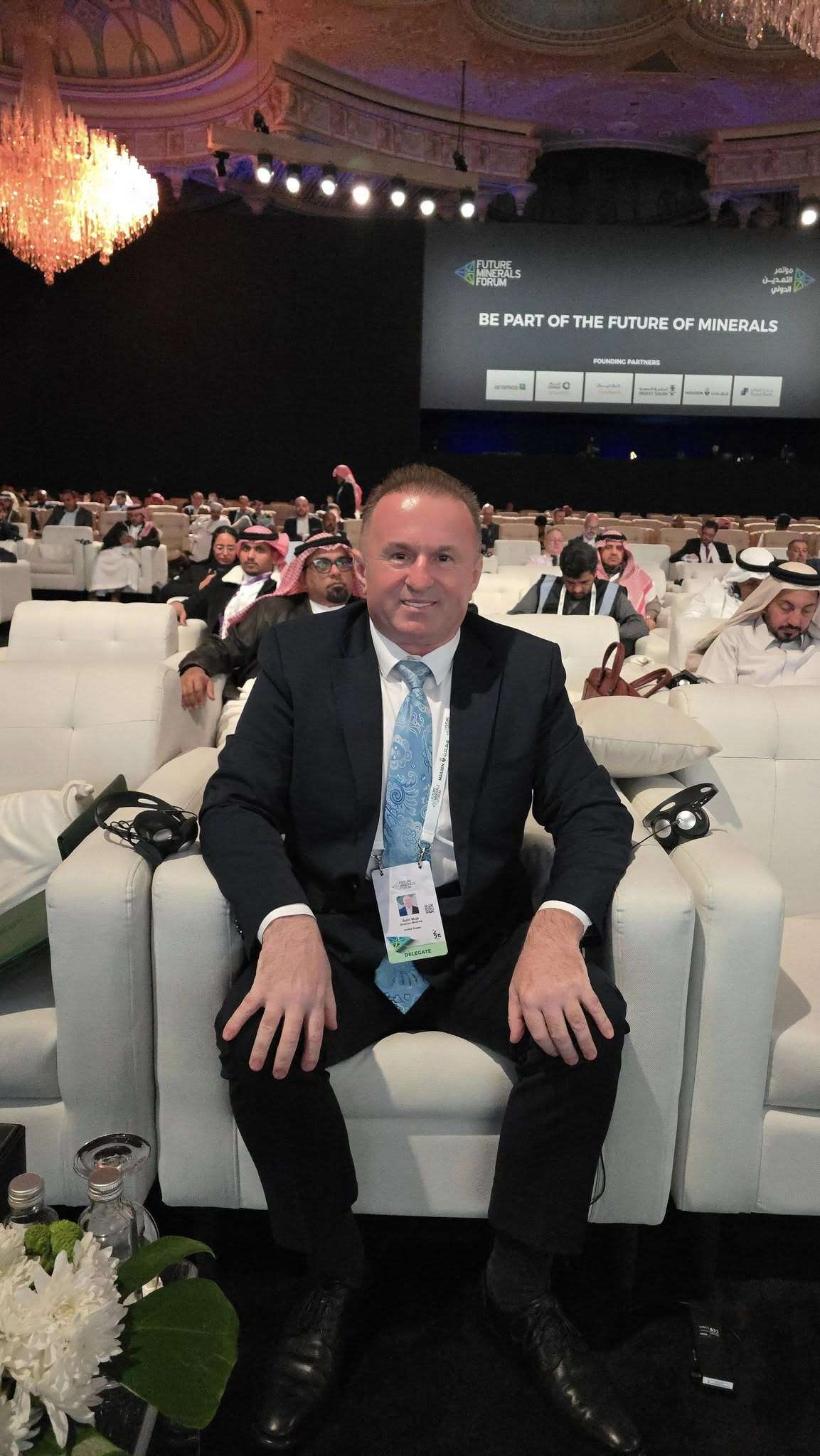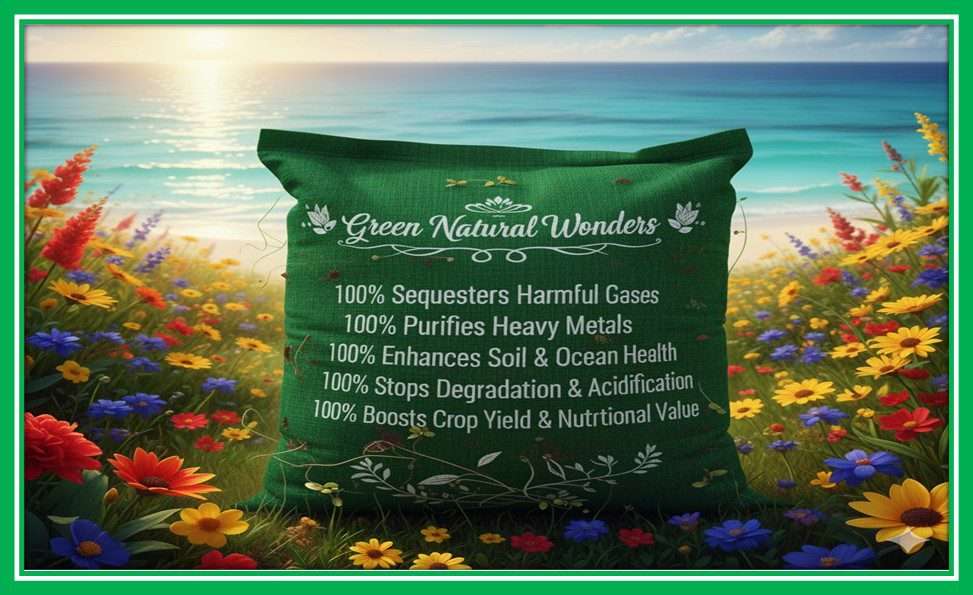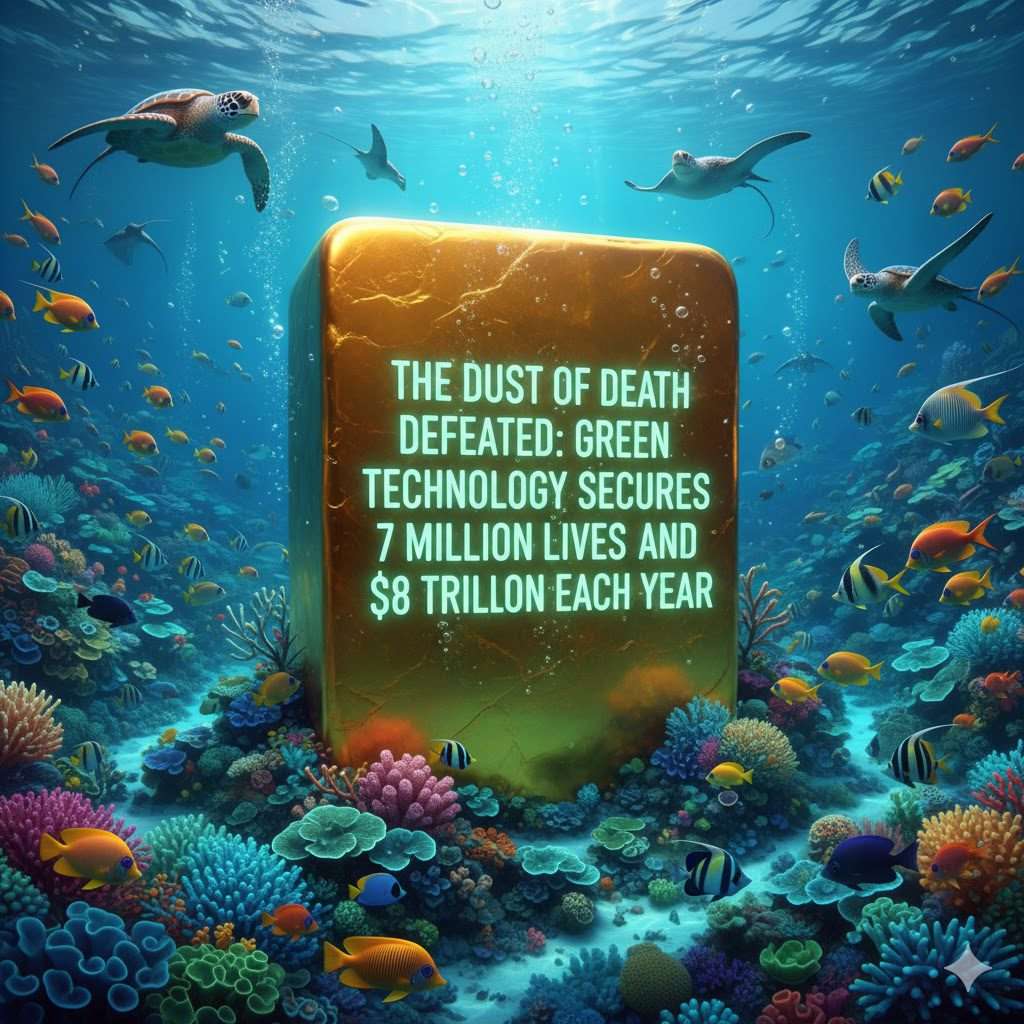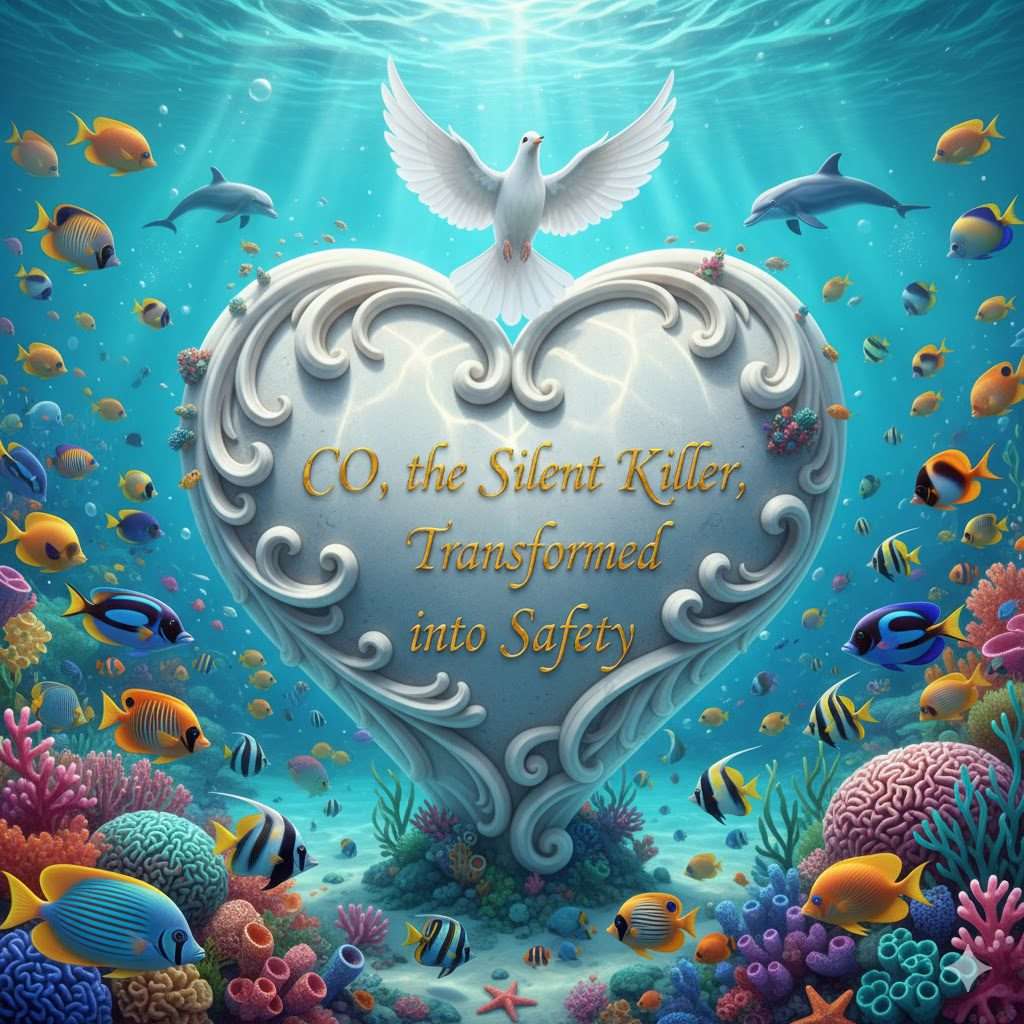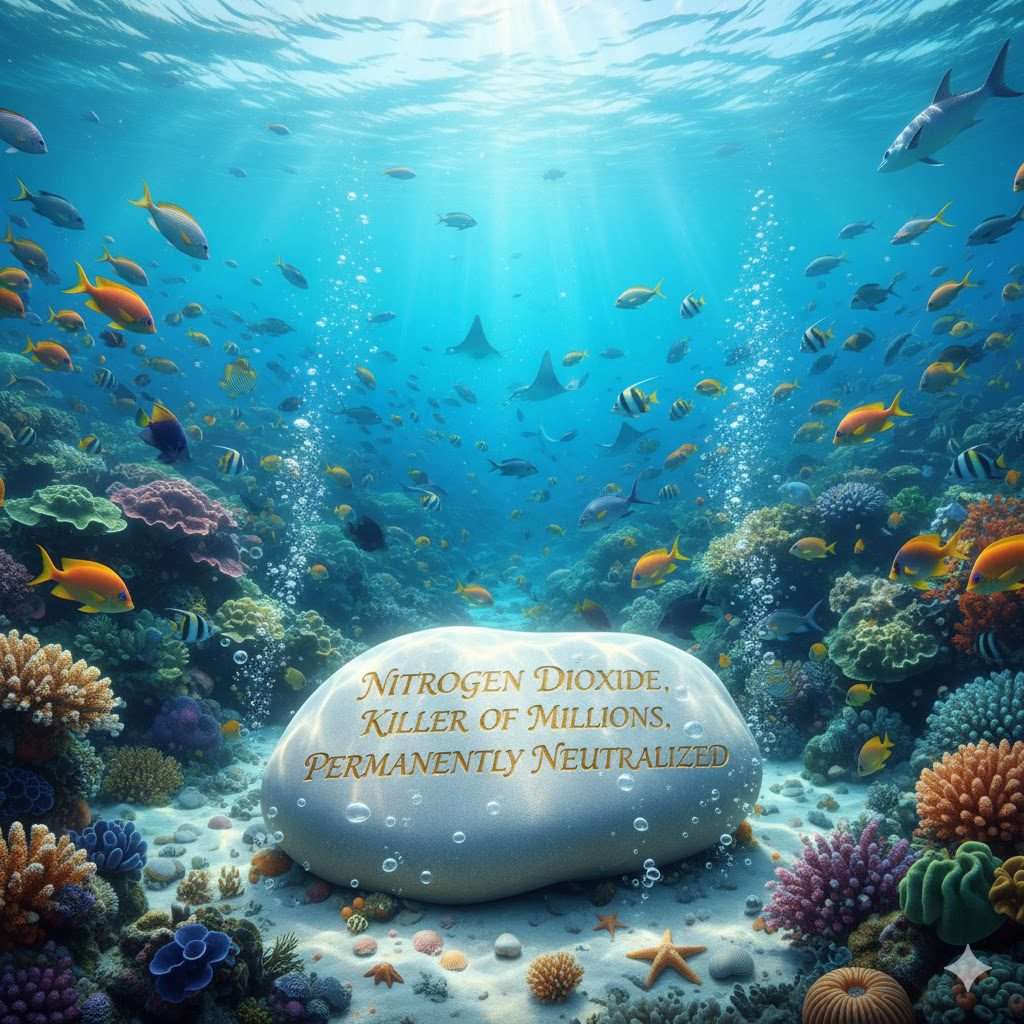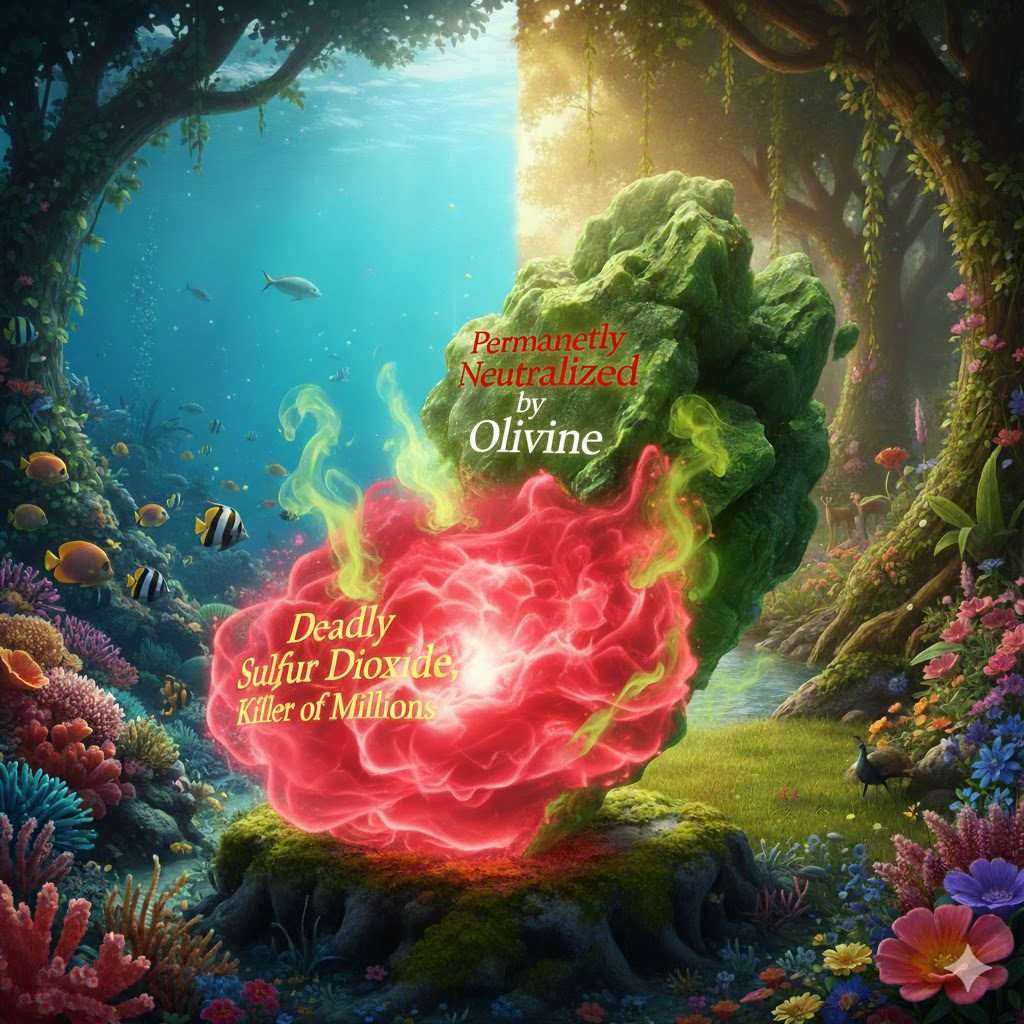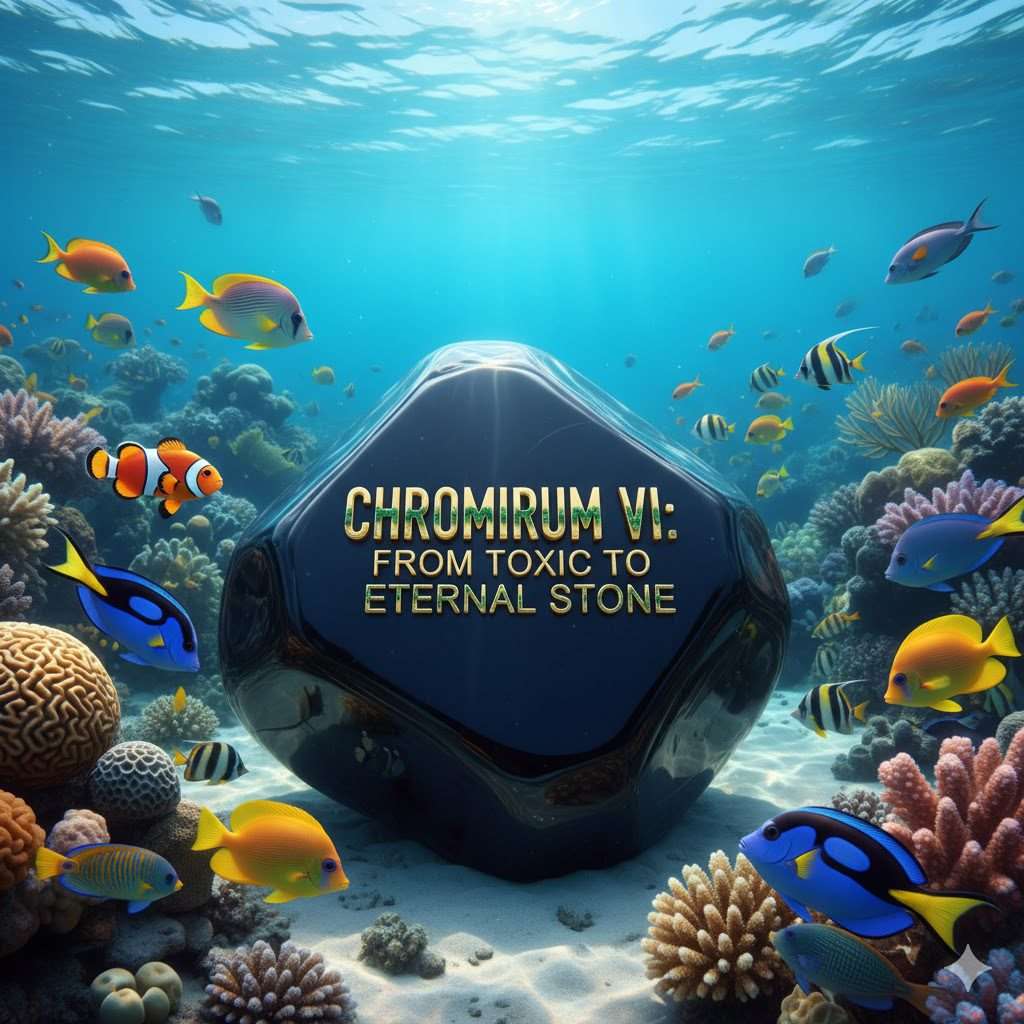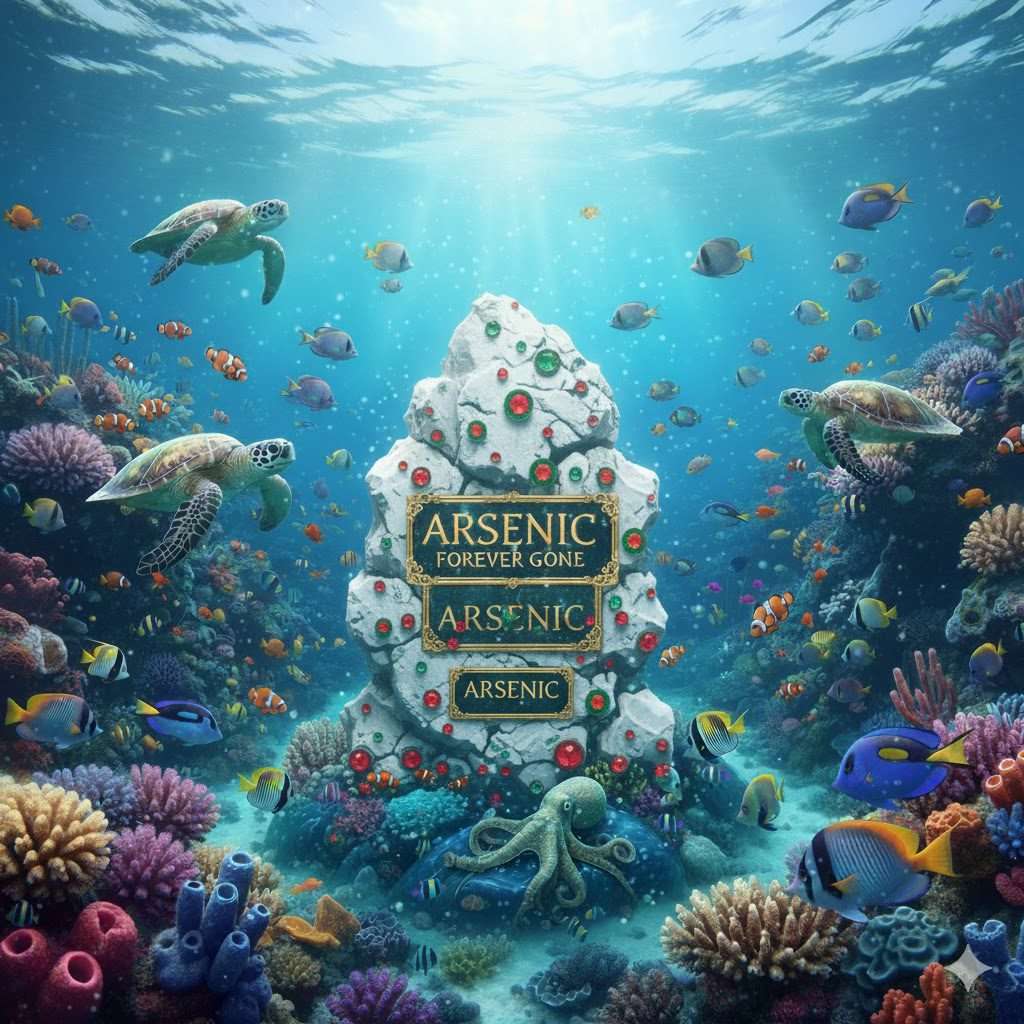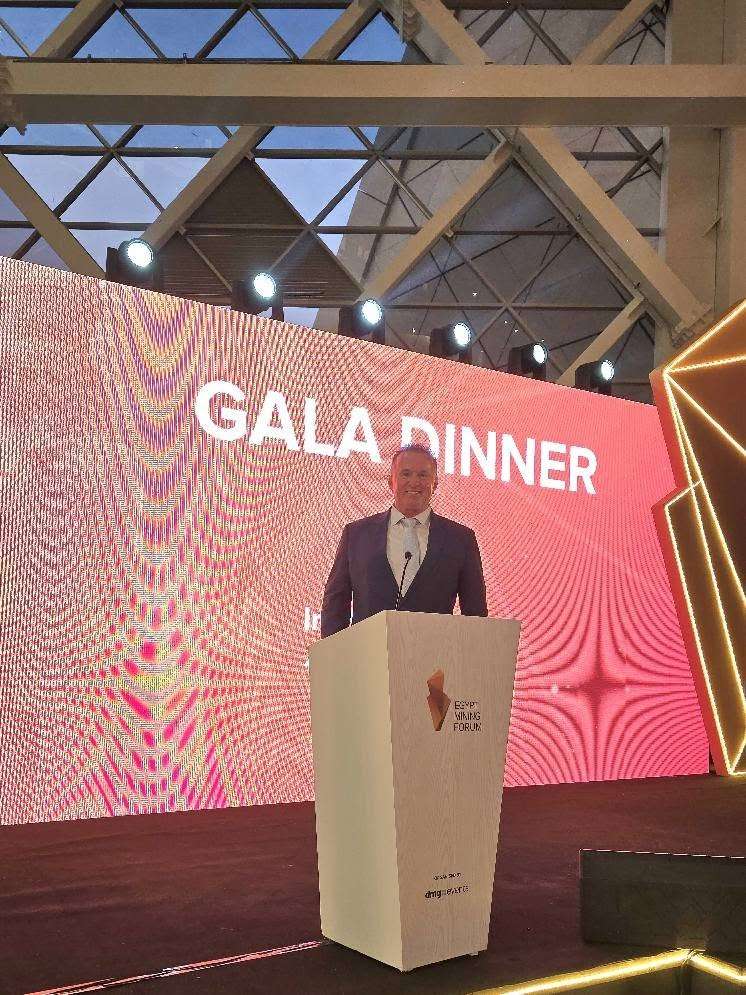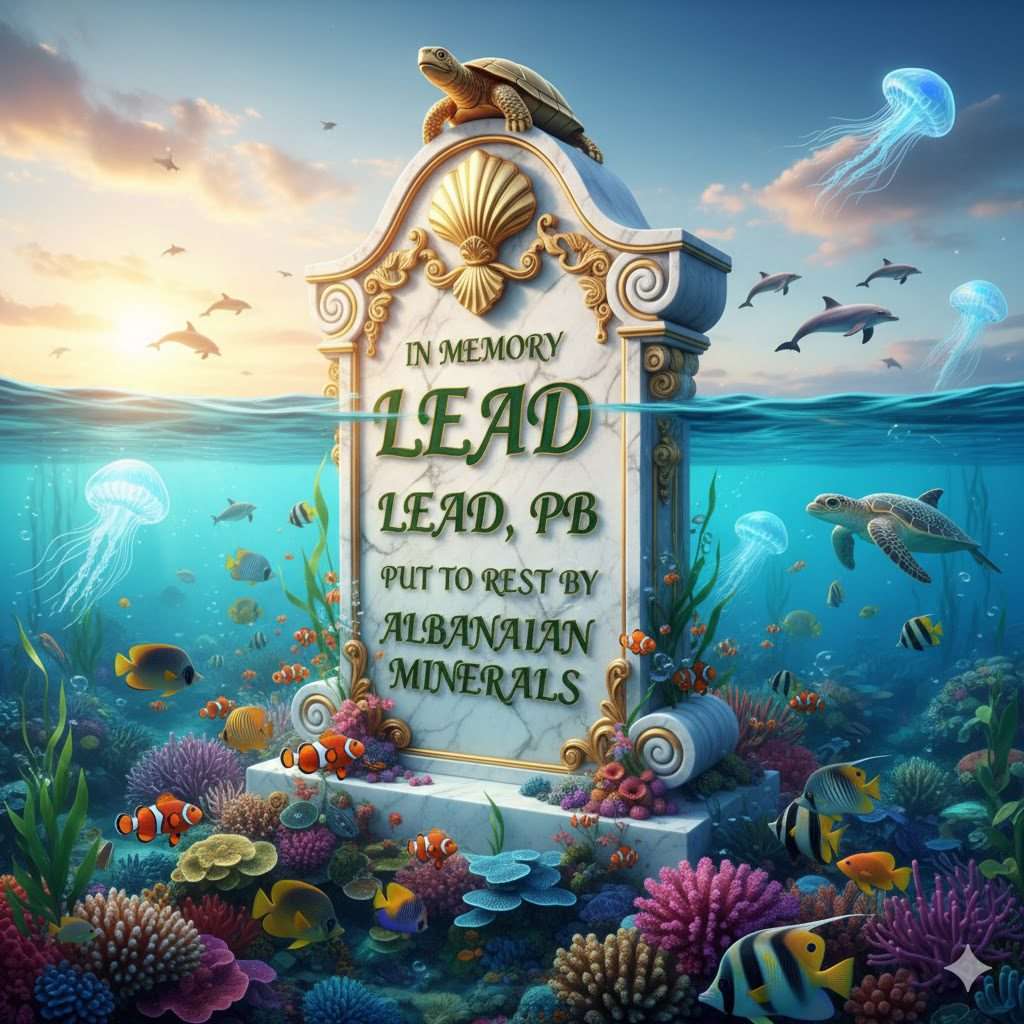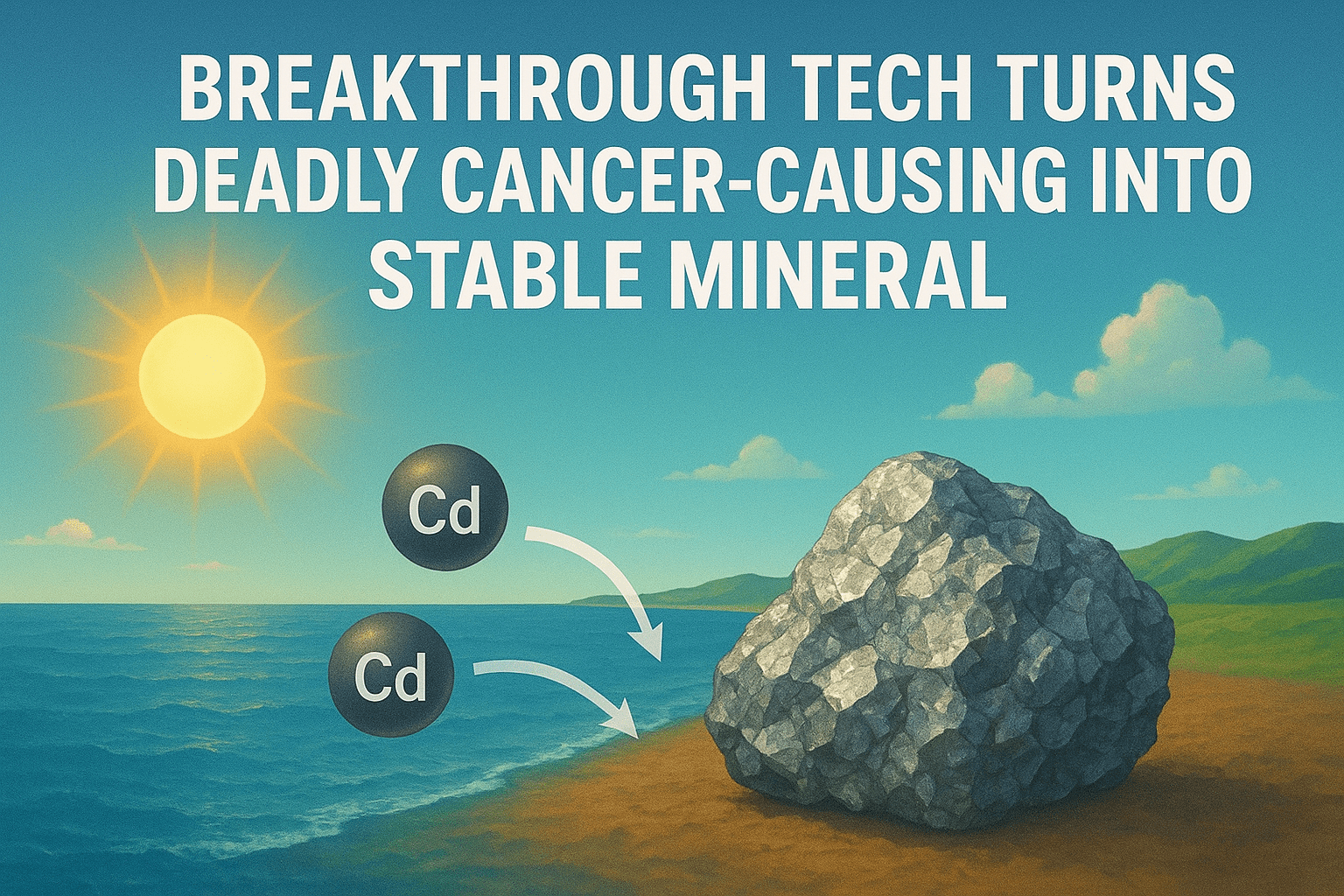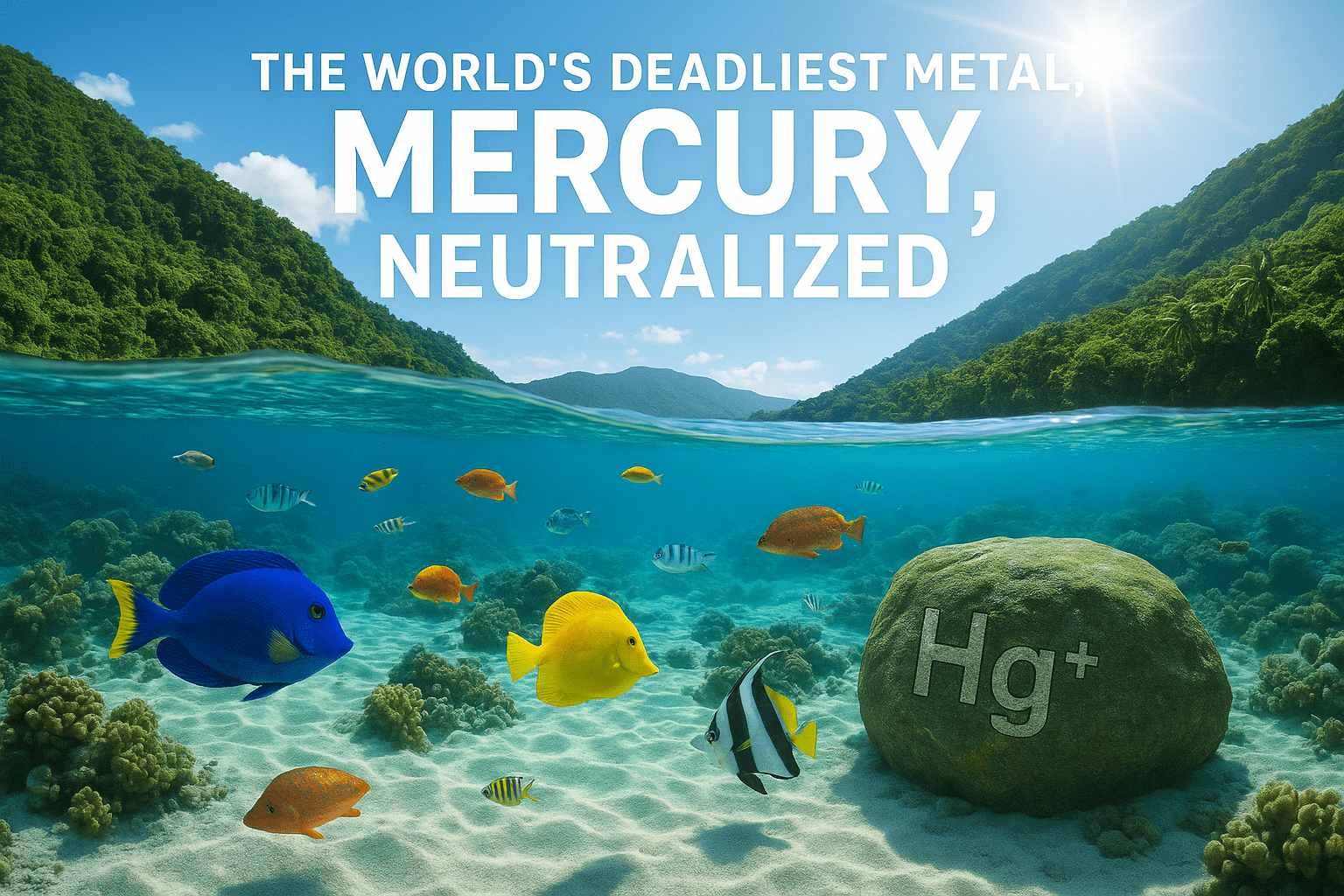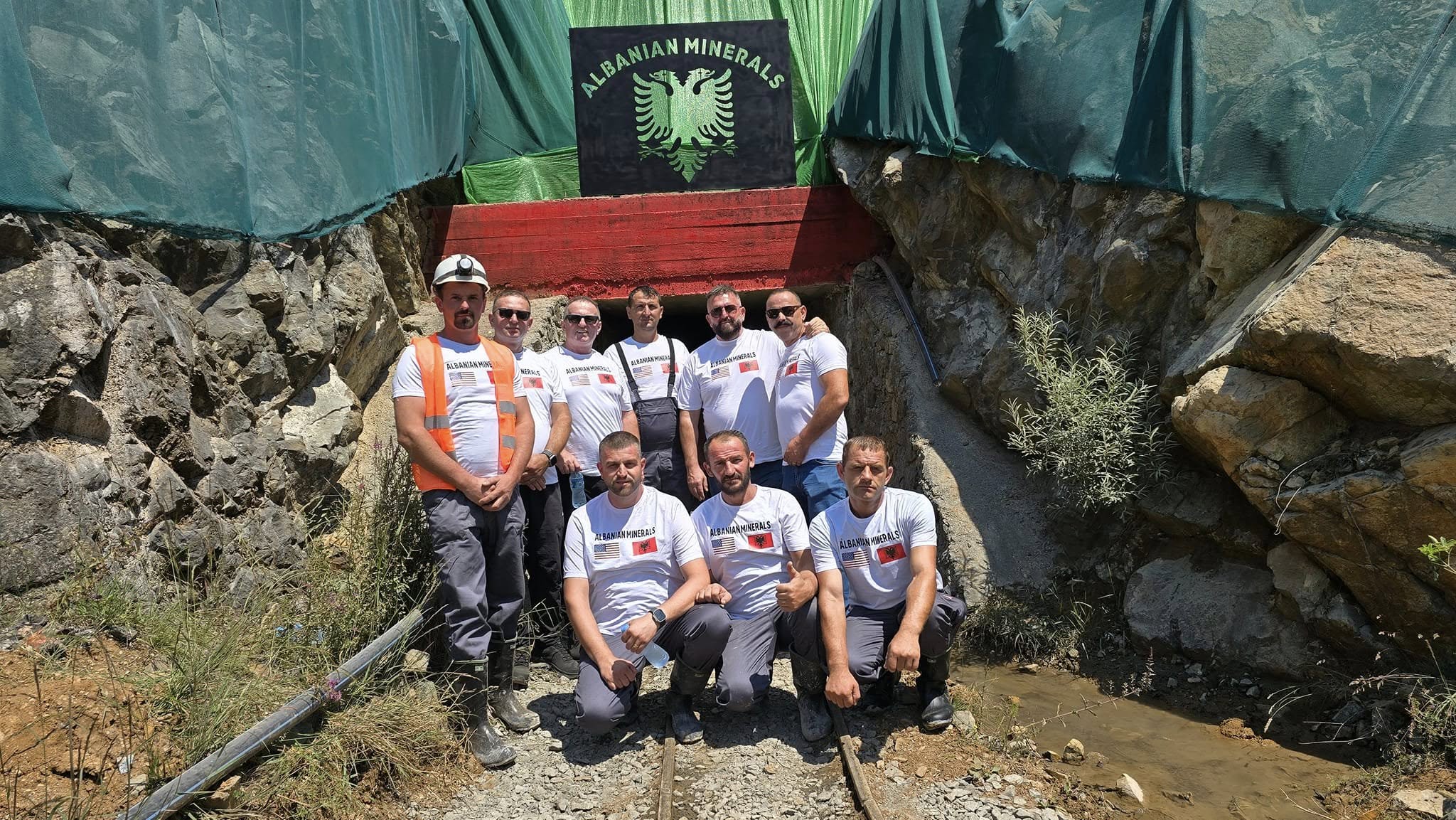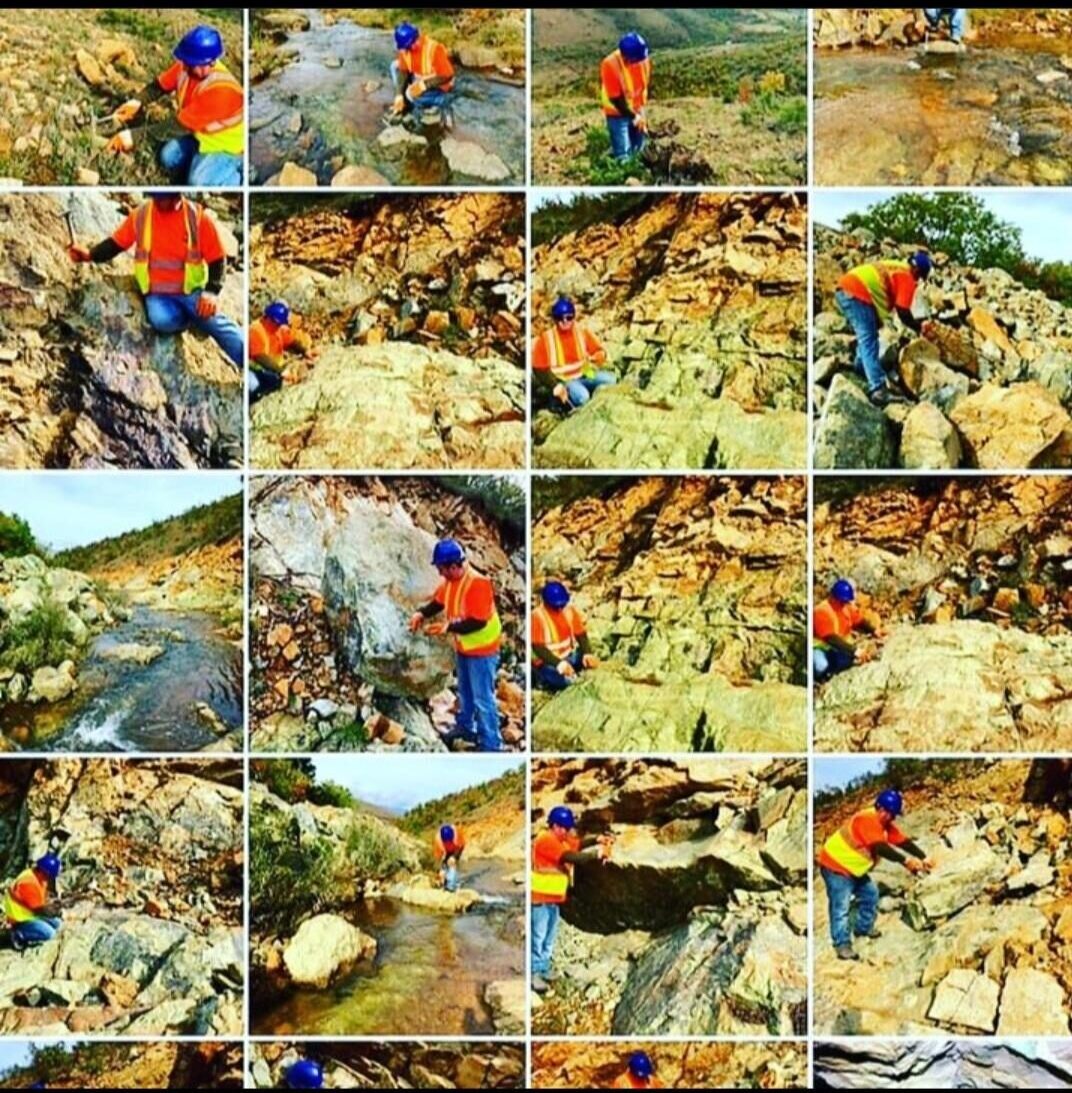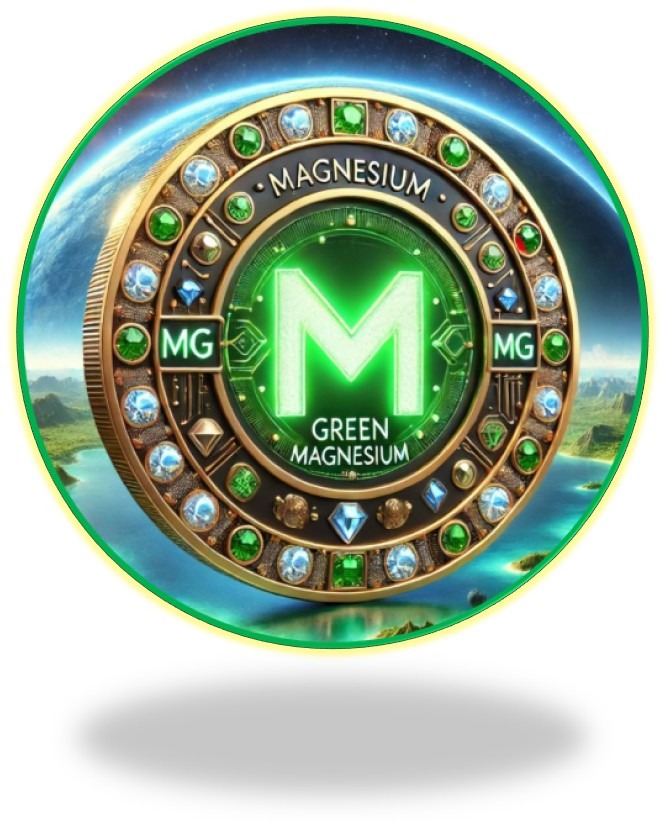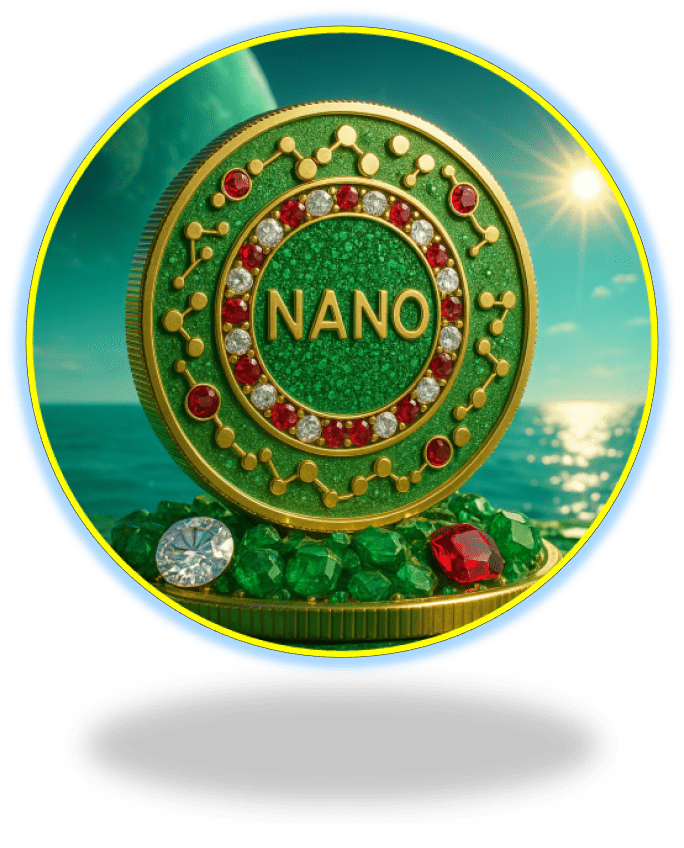
“The future of humanity will be built not just with concrete, but with conscience,” declares Sahit Muja, CEO of Albanian Minerals. Facing the unprecedented demand for 3 billion homes by 2030, his revolutionary green cement, Olix, transforms construction into a carbon-negative frontier, capturing CO₂, restoring ecosystems, and redefining the very architecture of sustainable civilization.
Sahit Muja said; The global construction industry stands at a crossroads, facing an unprecedented challenge that intertwines human development with environmental responsibility. By 2030, approximately three billion people will require adequate housing, encompassing basic services such as water, sanitation, and secure land tenure. Presently, around 1.6 billion people live in substandard housing, underscoring an immediate need for large-scale construction interventions. Meeting this demand would require the construction of roughly 96,000 new affordable homes each day, a scale of activity that would strain traditional materials and energy systems while further exacerbating climate change. Conventional cement production alone contributes approximately four billion tons of CO₂ emissions annually, representing one of the largest industrial sources of greenhouse gases globally.
In the midst of this dual crisis of housing shortage and environmental degradation, innovation emerges as both necessity and opportunity. Green Cement, this technology under development by Albanian Minerals and Green Natural Wonders called Olix, is a revolutionary green cement derived from abundant magnesium silicates that exemplifies this innovation. Unlike traditional Portland cement, which releases carbon dioxide during calcination and requires energy-intensive production, Olix captures CO₂ as it cures, creating carbon-negative concrete. This approach not only mitigates emissions but also produces a more durable material, capable of withstanding the demands of large-scale urban construction. By turning a principal contributor to global warming into a carbon sink, New tech Olix transforms the very act of building into a mechanism for environmental restoration.
Urbanization trends indicate that the majority of construction demand will be concentrated in Asia-Pacific and Africa. Asia-Pacific is projected to require more than two billion new housing units by 2030, driven primarily by China, India, and Southeast Asian nations. Africa, experiencing some of the highest urban growth rates worldwide, will require an estimated 800 million new units within the same timeframe. Europe and North America, while experiencing slower population growth, face significant needs in retrofitting and modernization, aligning with increasingly stringent energy efficiency and green building mandates. Latin America, too, will see substantial construction activity as governments strive to meet affordable housing targets. These regional patterns present both urgent challenges and substantial opportunities for deploying low-carbon construction materials at scale.
The environmental footprint of traditional cement production is vast. The process involves heating limestone to approximately 1,450 degrees Celsius, releasing CO₂ both from fossil fuel combustion and from the chemical transformation of calcium carbonate into calcium oxide. Each ton of conventional cement produces roughly 0.9 tons of CO₂, consumes up to four gigajoules of energy, and requires significant quantities of water and other raw materials. The widespread reliance on this method has contributed to the accumulation of 2.3 trillion tons of CO₂ in the atmosphere, a central driver of global warming and its cascading impacts on ecosystems, weather systems, and human health.
Olix represents a fundamental departure from this paradigm. Harnessing olivine, a magnesium silicate mineral abundant in Albanian reserves, Olix cement reacts with CO₂ during curing to form stable magnesium carbonates, permanently sequestering carbon while enhancing material strength and durability. Its production requires less energy than traditional methods—approximately 2.5 gigajoules per ton compared with four for Portland cement, and utilizes water more efficiently. Lifecycle assessments demonstrate that the use of Olix can transform the construction sector from a net emitter of four billion tons of CO₂ annually to a potential net sink of up to four billion tons, depending on adoption rates and scale of implementation. The combination of reduced energy requirements, carbon sequestration, and extended material lifespan positions Olix as a transformative tool for sustainable urban development.
Market opportunities for Olix and similar green construction materials are substantial. The global green cement market is projected to exceed $1.2 trillion by 2035, fueled by urbanization, corporate environmental commitments, and regulatory mandates such as carbon pricing and green procurement policies. Europe represents the largest near-term investment opportunity, driven by the European Union’s Green Deal and retrofitting initiatives for energy efficiency. Asia-Pacific, led by the rapid expansion of urban centers in China, India, and Southeast Asia, represents both the largest construction challenge and a key opportunity for scaling carbon-negative materials. North America and the Middle East are poised for growth in ESG-driven construction and infrastructure modernization, while Africa and Latin America present emerging markets with high demand for affordable and sustainable housing solutions.
Policy frameworks and regulatory incentives will play a decisive role in the adoption of carbon-negative cement. Carbon pricing mechanisms, green procurement mandates, and building code revisions can accelerate the transition toward low-carbon construction. Public-private partnerships, particularly in social housing and infrastructure development, can serve as catalysts for large-scale adoption, providing both financial incentives and credibility to innovative construction practices. Aligning policy frameworks with technological innovation ensures that environmental gains are not offset by market inertia or regulatory misalignment.
The future of urban construction requires a paradigm shift that integrates sustainability at every stage of development. Scaling the production and distribution of carbon-negative cement like Olix necessitates coordinated action across governments, investors, researchers, and construction firms. Investment in supply chain infrastructure, research into further material optimization, and integration into urban planning and housing strategies are essential to unlock the full potential of green construction materials. By adopting carbon-negative building solutions, societies can address housing shortages while simultaneously contributing to climate mitigation, creating a virtuous cycle in which infrastructure development becomes a driver of environmental restoration.
In conclusion, the construction sector sits at the nexus of human development and climate responsibility. Rapid urbanization and population growth demand unprecedented levels of housing and infrastructure, while conventional building materials exacerbate global emissions. Carbon-negative solutions like Olix cement redefine the possibilities of sustainable construction, offering a pathway to simultaneously meet human needs and mitigate climate impact.
Adoption at scale represents not only a technological innovation but a moral and strategic imperative, ensuring that the growth of cities and societies does not come at the expense of planetary health. By transforming the act of building into an act of restoration, the global construction sector can evolve into a net positive force, securing both habitable spaces for humanity and a resilient future for the planet.
Transforming Planetary Catastrophe and the World’s Greatest Challenges into a Trillion-Dollar Opportunity
Today, pollution in all its forms, air, water, soil, alongside climate change, land degradation, and ocean acidification, represents the gravest existential threat to our planet and humanity. For decades, industrialization and human activity have exacted a silent and staggering toll: over 10 million lives lost annually and economic damages exceeding $8 trillion worldwide. Toxic metals, cadmium, lead, chromium, uranium, mercury, nickel, copper, zinc, arsenic, cobalt, alongside lethal gases such as sulfur dioxide (SO₂), carbon monoxide (CO), carbon dioxide (CO₂), ozone (O₃), and nitrogen oxides (NOₓ), have long been deemed immutable hazards to life on Earth.
Yet, where most perceive catastrophe, visionaries discern the largest industrial and ecological frontier in human history. What has been humanity’s crisis can now be transformed into a trillion-dollar green economy, grounded in science, mineral wealth, and technological ingenuity, engineered for planetary-scale regeneration.
At the forefront of this transformation stands Albanian Minerals. By leveraging high-grade green magnesium olivine, advanced geochemistry, AI-driven industrial engineering, and ocean-wave-powered activation systems, Albanian Minerals has developed technologies capable of neutralizing the deadliest pollutants, converting them into permanent, sustainable mineral forms, and restoring the natural resilience of Earth’s ecosystems. Toxic metals are transformed into stable minerals; lethal gases are sequestered and converted; degraded soils and waters are rejuvenated. Pollution is no longer a liability, it becomes a resource, an industrial asset, and a driver of innovation and economic growth.
These solutions are operational today, scalable to a global level, and economically transformative. Albania’s unparalleled olivine reserves, combined with AI-optimized deployment and renewable energy inputs, sunlight, rainfall, and ocean wave energy, enable a system that is energy-free, self-sustaining, and environmentally regenerative. From toxic land remediation to ocean restoration and atmospheric purification, this approach embodies capitalism at its most sophisticated: profitable, ethical, and aligned with the planet’s natural intelligence.
The implications are profound: the world can now simultaneously tackle climate change, toxic pollution, ocean acidification, and soil degradation. A single mineral, magnesium olivine, acts as a catalyst for planetary health, capturing carbon dioxide, neutralizing acidity, immobilizing toxic metals, and generating regenerative byproducts for agriculture, construction, and industrial applications.
This is not charity. This is visionary industrialism, transforming Earth’s challenges into an unprecedented economic and ecological opportunity. The planet’s greatest threats can now be converted into its greatest assets, unlocking a trillion-dollar frontier of sustainable prosperity. The age of passive remediation is over, welcome to planetary-scale regeneration, powered by minerals, technology, and human ingenuity.
Gas Neutralization: Clearing the Air, Globally
Toxic gases from industry, transport, and energy systems are neutralized using mineral catalysis at planetary scale:
Sulfur Dioxide (SO₂)Sulfur Dioxide (SO₂)Sulfur Dioxide (SO₂) → Non-toxic sulfates; For generations, sulfur dioxide (SO₂) — the suffocating ghost of smokestacks and engines — has poisoned the air, corroded cities, and claimed millions of lives each year through lung disease, acid rain, and ecological decay. Now, the ancient mineral magnesium olivine (Mg₂SiO₄) has emerged as nature’s own antidote, transforming toxicity into timeless stability. In a profound geochemical reaction — Mg₂SiO₄ + 2SO₂ + 2H₂O → 2MgSO₃ + H₄SiO₄ Sulfur dioxide is permanently neutralized, forming magnesium sulfite (MgSO₃) and silicic acid (H₄SiO₄), both stable, non-toxic compounds that enrich the biosphere.
This natural alchemy reverses the scars of industry, capturing carbon, restoring balance, and purifying the breath of the planet. What once killed millions now sustains life. Through the silent power of stone, the Earth heals itself — elegantly, eternally, and in perfect harmony with nature’s original design.
Article content
Ozone (O₃) → Harmless oxygen; Magnesium ions released from the silicate lattice catalyze reactions that convert ozone into stable mineral forms, while silicate residues enrich soils and aquatic environments, fostering fertility, biodiversity, and ecological restoration. The process can be expressed elegantly as:
4O₃ + 2Mg₂SiO₄ + 4H₂O → 4MgO₃ + 2H₄SiO₄
Article content
Carbon Monoxide (CO) → CO₂, subsequently sequestered; Carbon monoxide, while inherently stable in the atmosphere, becomes far more manageable when paired with finely milled olivine in the presence of water and oxygen. Magnesium ions are liberated from the silicate lattice, catalyzing the conversion of CO into magnesium carbonate (MgCO₃) — a stable, insoluble mineral. Silicate residues remain, enriching soils and aquatic environments with silicon, fostering fertility, and laying the foundation for ecological restoration. The process can be expressed elegantly as:
Mg₂SiO₄ + 2CO + 2H₂O → 2MgCO₃ + H₄SiO₄
Article content
Carbon Dioxide (CO₂) → Permanent mineral carbonates; Revolutionary olivine technology captures and permanently stores CO₂ as stable minerals, At the heart of the climate crisis lies carbon dioxide (CO₂), the invisible architect of global warming and one of the greatest threats to life on Earth. Yet within the Earth’s own mantle lies the key to redemption: the ancient green mineral olivine (Mg₂SiO₄). Through a breathtaking natural reaction. Mg₂SiO₄ + 2CO₂ → 2MgCO₃ + SiO₂ , this mineral performs nature’s most elegant alchemy, capturing CO₂ from the atmosphere and transforming it into eternal stone.
The result is magnesium carbonate (MgCO₃) and silica (SiO₂), stable, harmless minerals that store carbon forever. This revolutionary process doesn’t just fight climate change; it rewrites humanity’s relationship with the planet, turning pollution into permanence, crisis into creation, and the breath of destruction into the foundation of renewal. Olivine stands as the green key to planetary healing, a silent guardian of Earth’s future.
Article content
Nitrogen Oxides (NO₂) → Safe agricultural nitrates; Nitrogen dioxide (NO₂), when dissolved in water, forms nitric acid (HNO₃)—a corrosive, pervasive threat that acidifies rain, destabilizes soils, corrodes infrastructure, and imperils ecosystems. New mineral-based technology transforms this danger into a regenerative opportunity.
When nitric acid encounters olivine (Mg₂SiO₄), magnesium ions are liberated, reacting to form magnesium nitrate (Mg(NO₃)₂)—a stable, insoluble mineral that permanently sequesters nitrogen, neutralizing its threat. The remaining silicate residues enrich soils with bioavailable silicon, fostering ecosystem restoration and soil resilience.
The chemical transformation follows this elegant pathway:
Outcome: Nitrogen rendered harmless, environmental toxicity eliminated
Byproduct: Silicon-enriched residues support plant growth and soil regeneration
Impact: Converts an atmospheric pollutant into a permanent ecological asset
These processes eliminate pollutants while generating valuable, marketable outputs, transforming environmental cleanup into a profitable industrial ecosystem.
Article content
Heavy Metal Detoxification: From Poison to Permanence
Cadmium (Cd²⁺): In a historic fusion of geology and innovation, Albanian Minerals has unveiled a revolutionary natural process that transforms cadmium — one of Earth’s most lethal carcinogens, into safe, inert stone. Using the ancient green mineral olivine (Mg₂SiO₄), this breakthrough technology neutralizes cadmium ions through a self-sustaining geochemical reaction: Cd²⁺ + Mg₂SiO₄ + CO₂ + H₂O → CdCO₃ + 2Mg²⁺ + H₄SiO₄. The result is cadmium carbonate (CdCO₃) — a stable, non-toxic mineral that permanently removes cadmium from the biosphere while capturing atmospheric carbon dioxide.
Beyond detoxification, the process restores soils, purifies water, and regenerates ecosystems, proving that the solutions to humanity’s greatest environmental crises are written in the chemistry of the Earth itself. Through olivine, pollution becomes permanence, and one of the planet’s deadliest poisons is reborn as the foundation of renewal.
Article content
Lead (Pb²⁺): For centuries, lead has haunted the human story — a silent architect of progress and tragedy, claiming over 1.5 million lives every year through contamination of air, water, and soil. Today, that legacy meets its end. In a revolutionary scientific achievement, Albanian Minerals, has unveiled a natural process that converts toxic lead into harmless mineral stone through the catalytic power of olivine (Mg,Fe)₂SiO₄ — the Earth’s ancient green crystal of renewal.
When exposed to carbon dioxide and water, olivine initiates a cascade of geochemical reactions: Mg₂SiO₄ + 4CO₂ + 4H₂O + Pb²⁺ → 2Mg²⁺ + PbCO₃(s) + 3HCO₃⁻ + H₄SiO₄, sequestering carbon while transforming deadly lead ions into lead carbonate (PbCO₃) and lead silicate (PbSiO₃) — stable, insoluble, and eternal.
This is geochemistry reborn as salvation: pollution metamorphosed into permanence, toxicity rewritten into tranquility. With each ton of olivine, the planet reclaims its balance, neutralizing lead’s poison, restoring ecosystems, and capturing atmospheric carbon in the same breath.
A triumph of natural intelligence and human vision, this discovery marks a new epoch of planetary restoration, where the Earth’s own minerals become instruments of healing, and where science, nature, and morality converge in harmony.
Article content
Chromium (Cr⁶⁺): Hexavalent chromium (Cr⁶⁺), one of the most toxic industrial metals, is now transformed into safe, inert stone through the natural chemistry of magnesium-rich olivine. In a groundbreaking geochemical reaction 3Mg₂SiO₄ + 2CrO₄²⁻ + 4H₂O → Cr₂(OH)₂(CO₃) + 3Mg²⁺ + 2H₄SiO₄ — toxic chromium becomes permanently locked in stable minerals. Albanian Minerals harnesses this ancient Earth process to detoxify soils and waters, capture CO₂, restore ecosystems, and turn industrial pollution into lasting environmental regeneration. A visionary fusion of science and nature, where pollution becomes permanence and carbon becomes stone
Article content
Uranium (UO₂²⁺): Albanian Minerals’ revolutionary technology permanently detoxifies uranium, transforming the soluble uranyl ion (UO₂²⁺) into stable uraninite (UO₂) through olivine’s ferrous iron: UO₂²⁺ + 2Fe²⁺ → UO₂(s) + 2Fe³⁺. This visionary geochemical alchemy not only neutralizes radioactive toxins but simultaneously captures CO₂, restores soil fertility, balances ocean acidity, and regenerates ecosystems at scale. By harnessing magnesium-rich olivine as a natural microscopic reactor, Albanian Minerals bridges geology and ecology, turning pollution into permanence, carbon into stone, and environmental degradation into self-sustaining renewal, a bold, scientific blueprint for a sustainable planetary future.
Article content
Mercury (Hg²⁺): Albanian Minerals’ breakthrough olivine technology neutralizes mercury (Hg²⁺) through natural geochemical alchemy: Hg²⁺ + 2OH⁻ → Hg(OH)₂(s), Hg²⁺ + CO₃²⁻ → HgCO₃(s), Hg²⁺ + Fe²⁺ → Hg⁰ + Fe³⁺, and Hg²⁺ + S²⁻ → HgS(s). This visionary approach permanently detoxifies oceans and waterways, captures CO₂ via Mg₂SiO₄ + 4CO₂ + 4H₂O → 2Mg²⁺ + 4HCO₃⁻ + H₄SiO₄, restores pH balance, replenishes essential nutrients, and regenerates marine ecosystems. Olivine becomes a microscopic alchemist, turning environmental crises into permanence, pollution into stone, and destruction into renewal, a planetary blueprint for sustainable restoratio
Article content
Arsenic (As³⁺/As⁵⁺): Arsenic, the silent killer, is permanently neutralized by Albanian Minerals’ green olivine technology. Through molecular transformations Mg₂SiO₄ + 2CO₂ + H₂O → 2MgCO₃ + H₄SiO₄ and AsO₄³⁻/AsO₃³⁻ → Mg₃(AsO₄)₂ toxic arsenic is captured in inert mineral lattices, while CO₂ is sequestered, soil fertility restored, acidity balanced, and ecosystems regenerated. Olivine becomes a microscopic alchemist, turning poison into permanence, pollution into stone, and environmental despair into planetary renewal.
Article content
Nickel:(Ni²⁺/Ni³⁺): Nickel pollution, a silent global threat to ecosystems, agriculture, and human health, meets its match in olivine ((Mg,Fe)₂SiO₄), Earth’s ancient green mineral. Through elegant geochemical transformations — (Mg,Fe)₂SiO₄ + 4H⁺ → 2(Mg²,Fe²⁺) + H₄SiO₄ and Ni²⁺ + 2OH⁻ → Ni(OH)₂↓ — olivine neutralizes acidity, immobilizes toxic nickel ions, and crystallizes them into stable minerals. Beyond detoxification, it replenishes essential nutrients, nurtures soils, restores biodiversity, and captures atmospheric CO₂, transforming pollution into permanence. Albanian Minerals pioneers a harmonious fusion of Earth’s timeless wisdom and advanced green technologies, ushering in a regenerative era where humanity and nature thrive together.
Copper (Cu²⁺): Copper pollution threatens ecosystems, soils, and waterways worldwide, silently poisoning life and reducing fertility. Through the ancient green mineral olivine ((Mg,Fe)₂SiO₄), this toxic ion is naturally neutralized: olivine weathers in water, raising pH, releasing magnesium and iron, and forming iron hydroxides that capture Cu²⁺. Copper is immobilized as stable hydroxides or silicate minerals (Cu²⁺ + 2OH⁻ → Cu(OH)₂↓), rendering it non-toxic and permanent. Beyond detoxification, olivine replenishes essential nutrients, restores soil and water balance, and captures CO₂, harmonizing ecological restoration with climate mitigation. Albanian Minerals harnesses olivine’s geochemical power to transform pollution into permanence, turning environmental crisis into sustainable renewa.
Zinc (Zn²⁺/Zn³⁺): Zinc contamination in soils and waterways disrupts ecosystems, poisons agriculture, and threatens human health. Magnesium-iron silicate olivine ((Mg,Fe)₂SiO₄) offers a natural, permanent solution: as it weathers, olivine releases Mg²⁺ and Fe²⁺, raises pH, and generates iron hydroxides that capture soluble zinc ions. Zinc is immobilized as stable hydroxides or silicate minerals (Zn²⁺ + 2OH⁻ → Zn(OH)₂↓), rendering it harmless and permanent. Beyond detoxifying zinc, olivine replenishes essential nutrients, balances acidity, and sequesters atmospheric CO₂, transforming polluted landscapes into thriving ecosystems. Albanian Minerals harnesses this ancient mineral’s geochemistry to turn environmental crises into enduring ecological renewal.
Cobalt (Co²⁺) : From the depths of Earth’s mantle, olivine—the ancient green gemstone of planetary wisdom—rises as a guardian of life, transforming cobalt’s silent threat into enduring stability. Through a graceful, natural reaction, cobalt ions are captured and bound into a permanent crystalline embrace:
In this sublime alchemy, toxic Co²⁺ becomes a rock-like mineral, insoluble, harmless, and eternal. As olivine weathers, it releases essential nutrients—magnesium, iron, and silicon—reviving soils, purifying waters, and restoring ecological balance. Acidic lands are neutralized, polluted rivers healed, and carbon subtly sequestered, as nature’s own chemistry orchestrates a symphony of planetary regeneration.
Under Albanian Minerals’ visionary stewardship, cobalt’s danger is not merely neutralized—it is transformed into permanence, nurturing fertile landscapes and resilient ecosystems. Here, the Earth teaches humanity its timeless lesson: that even the deadliest toxins can become instruments of renewal, and that nature’s wisdom, aligned with human innovation, can heal our world.
Key Attributes of Olivine’s Transformative Power
Energy-Free, Naturally Scalable: Harnessing the intrinsic alchemy of Earth’s green minerals, this system operates entirely through nature’s own forces—sunlight, rain, and the ceaseless rhythms of soil and water—delivering a solution to pollution at planetary scale without external energy input.
Permanent and Self-Sustaining: Through molecular-level transformations, toxic metals and pollutants are irreversibly locked into stable, inert mineral architectures. These crystalline forms endure across millennia, offering a timeless solution where contamination becomes history, and remediation is forever.
Regenerative Byproducts for a Thriving Planet: Beyond purification, olivine weaves vitality into ecosystems, releasing magnesium, iron, and silicates that nourish soils, fortify crops, and support resilient food systems. Its mineral byproducts fuel sustainable construction and eco-conscious industry, turning environmental stewardship into tangible prosperity.
A Symphony of Science and Nature: This process is not merely remediation—it is planetary alchemy. It unites geochemistry, ecology, and human ingenuity into a seamless continuum, where pollution transforms into permanence, decay becomes renewal, and the Earth itself is empowered to heal.
Visionary Sustainability: Olivine embodies a new paradigm, where human progress and planetary health coexist in harmony. By embracing these ancient minerals, we catalyze a future where ecosystems flourish, communities thrive, and the legacies of industrial harm are rewritten as chronicles of regeneration.
Where others see planetary catastrophe, we behold the greatest renaissance in human history — a trillion-dollar frontier where science, spirit, and the elemental wisdom of the Earth converge. Through the alchemy of minerals, technology, and human ingenuity, we are not merely restoring what was lost; we are reimagining the fabric of life itself. Pollution is no longer a curse upon our civilization, it has become the raw material of renewal, the very stone from which the future is sculpted.
Sahit Muja

